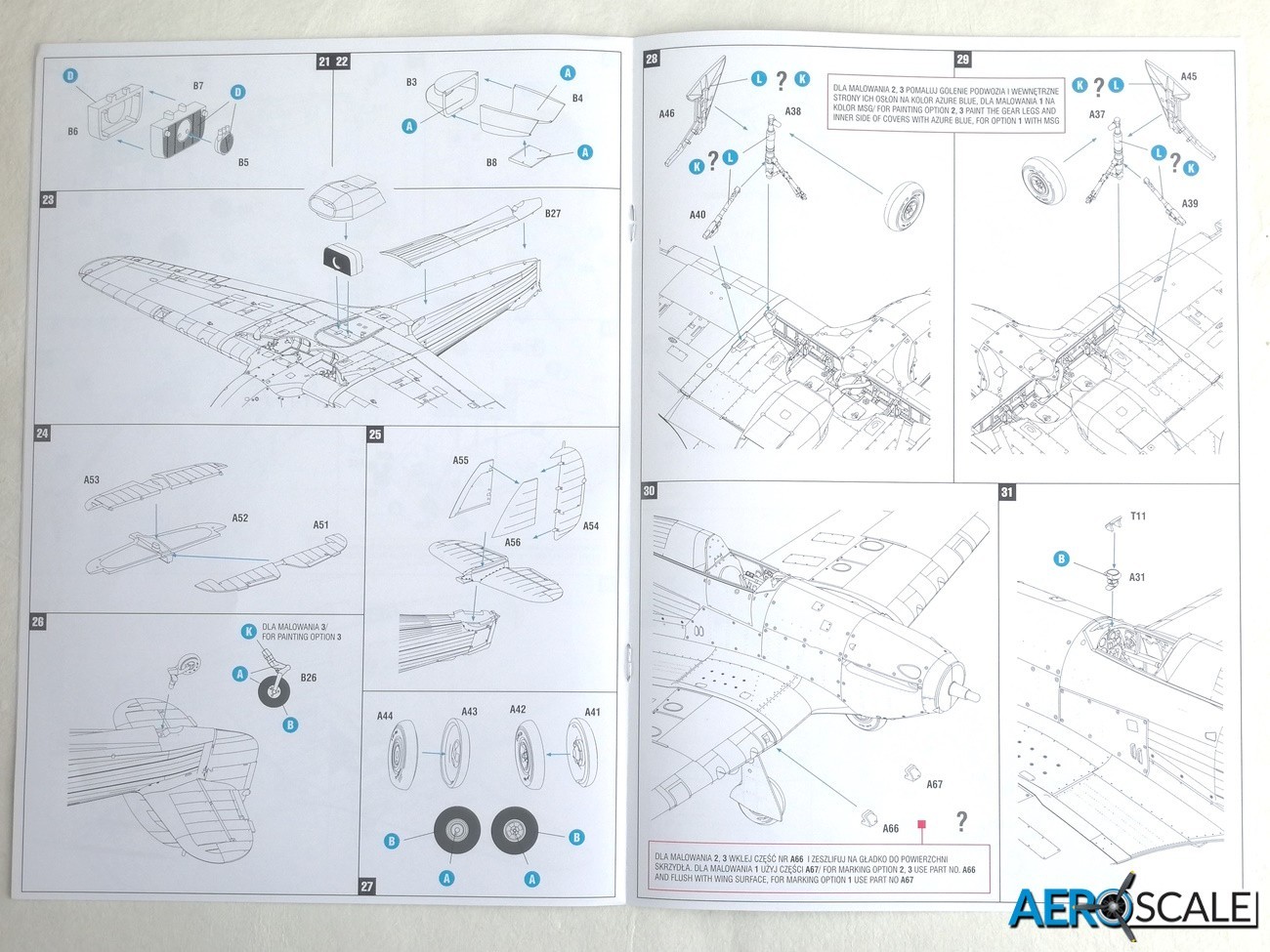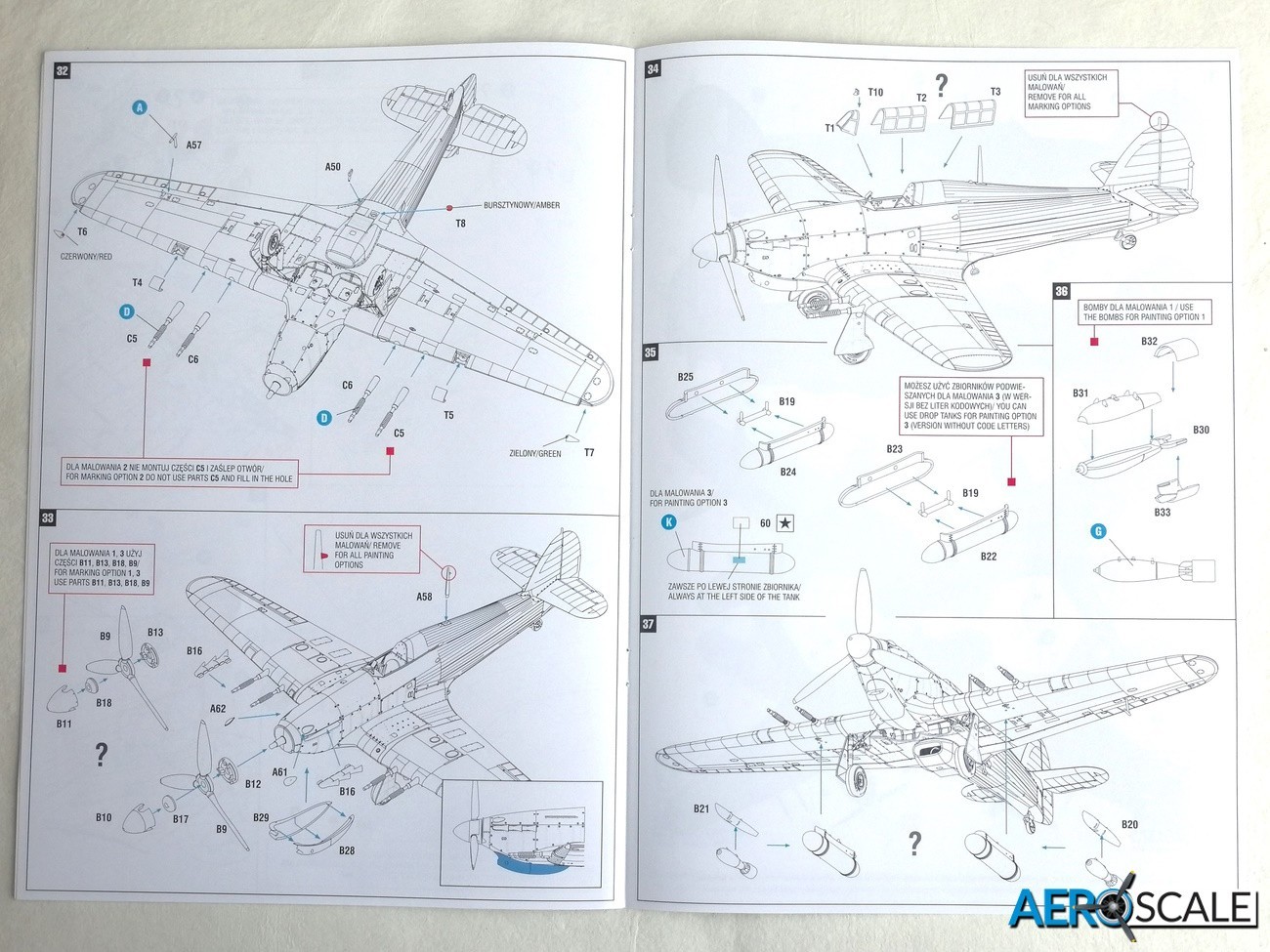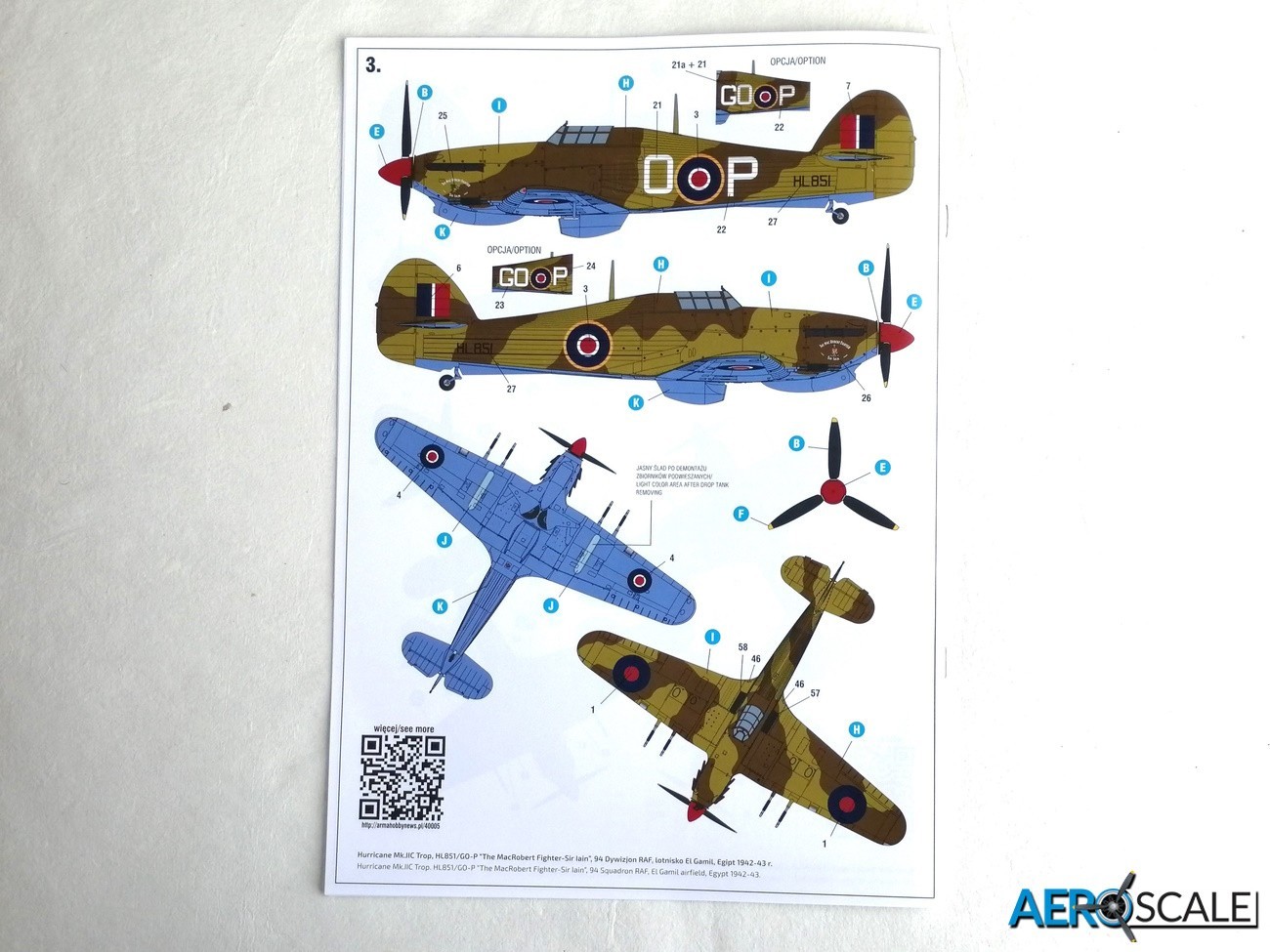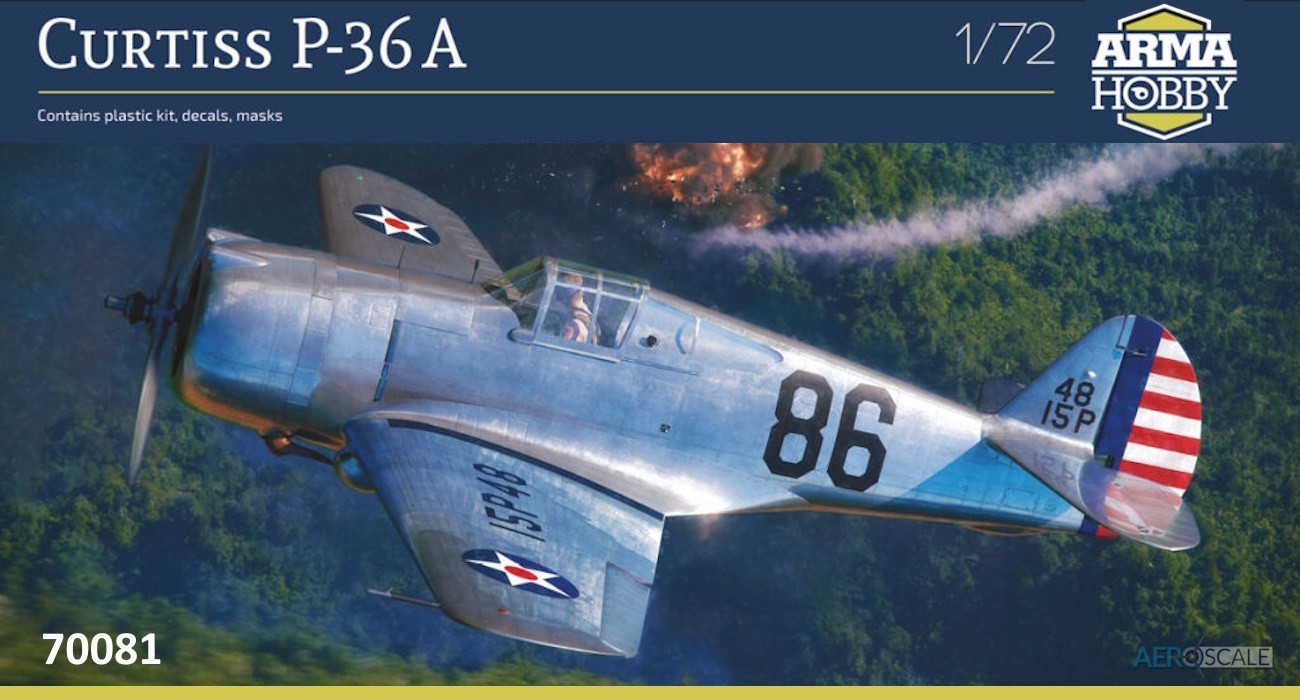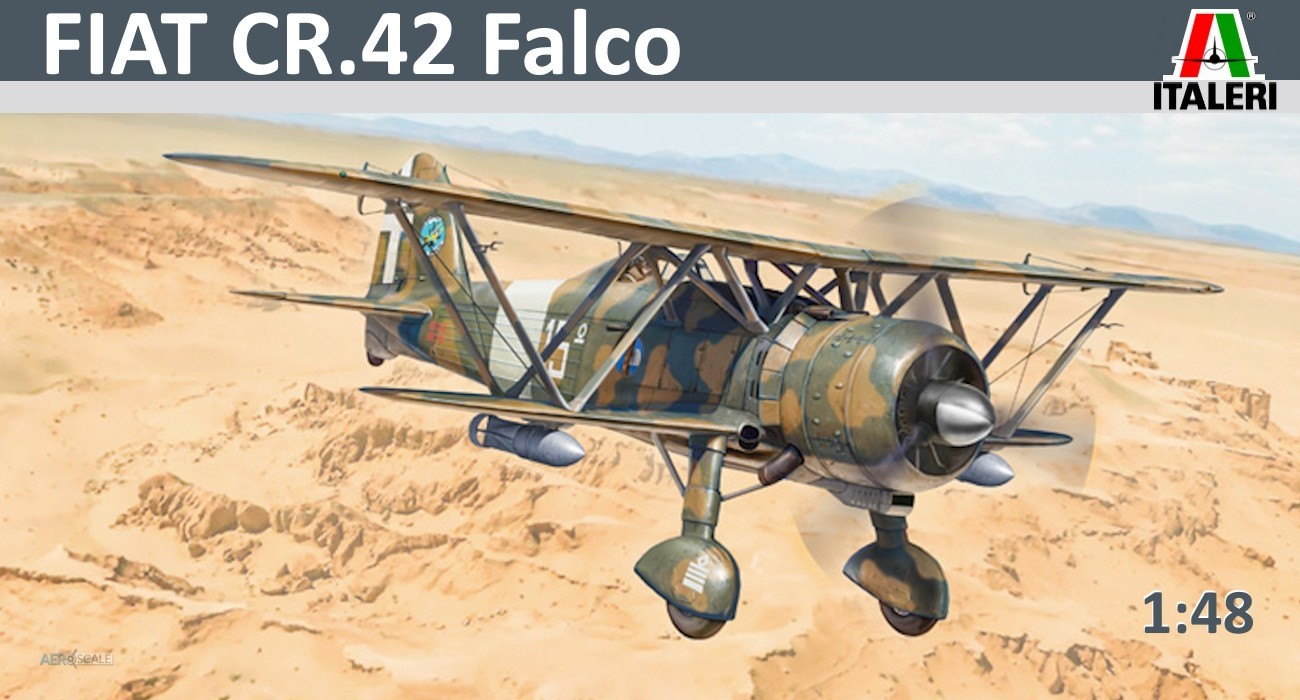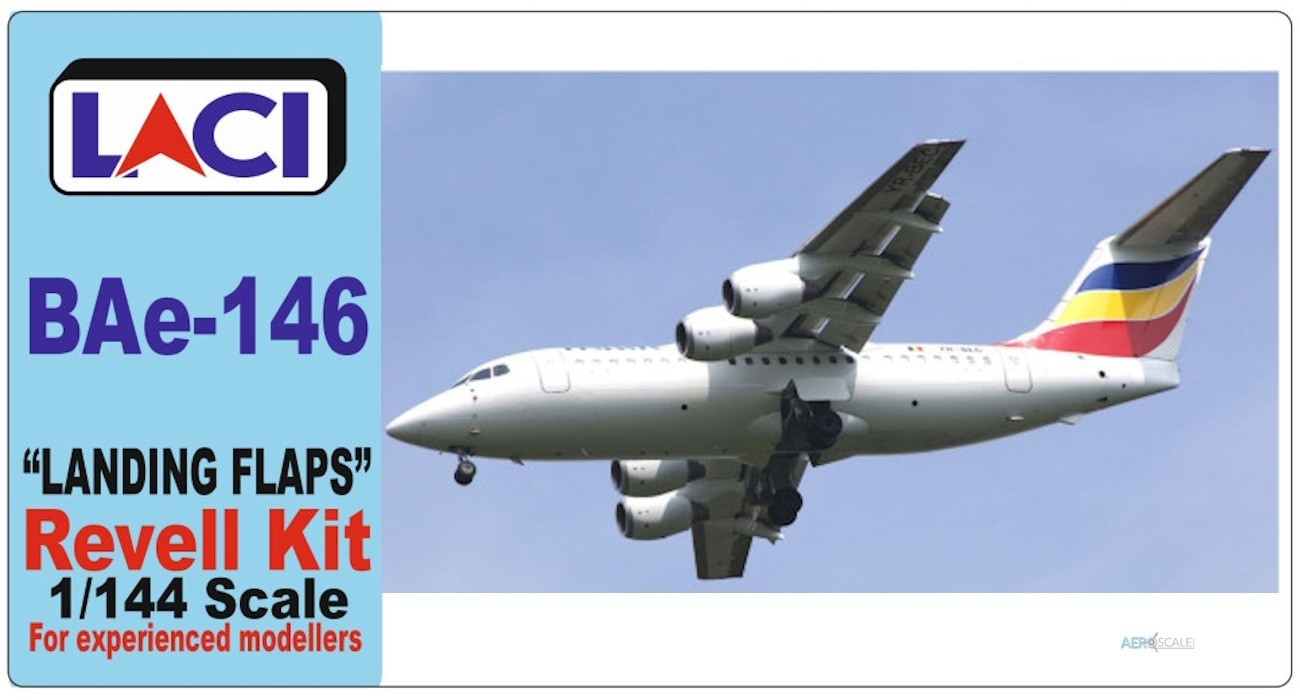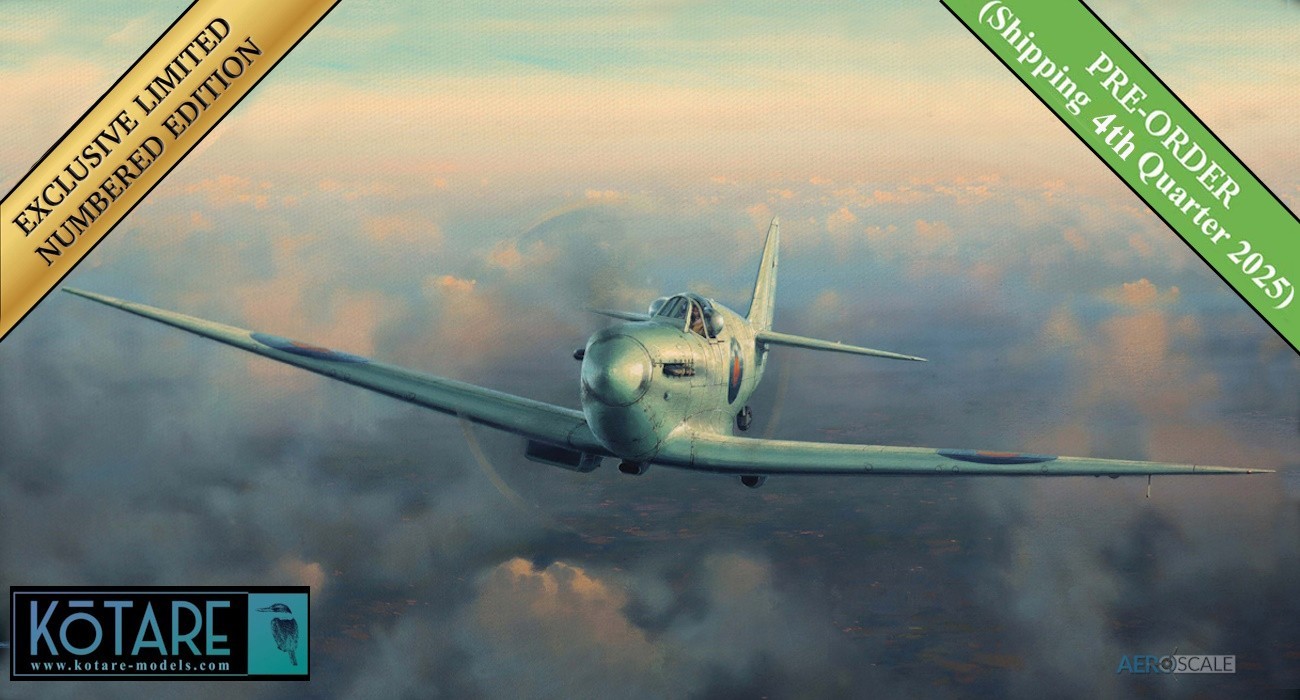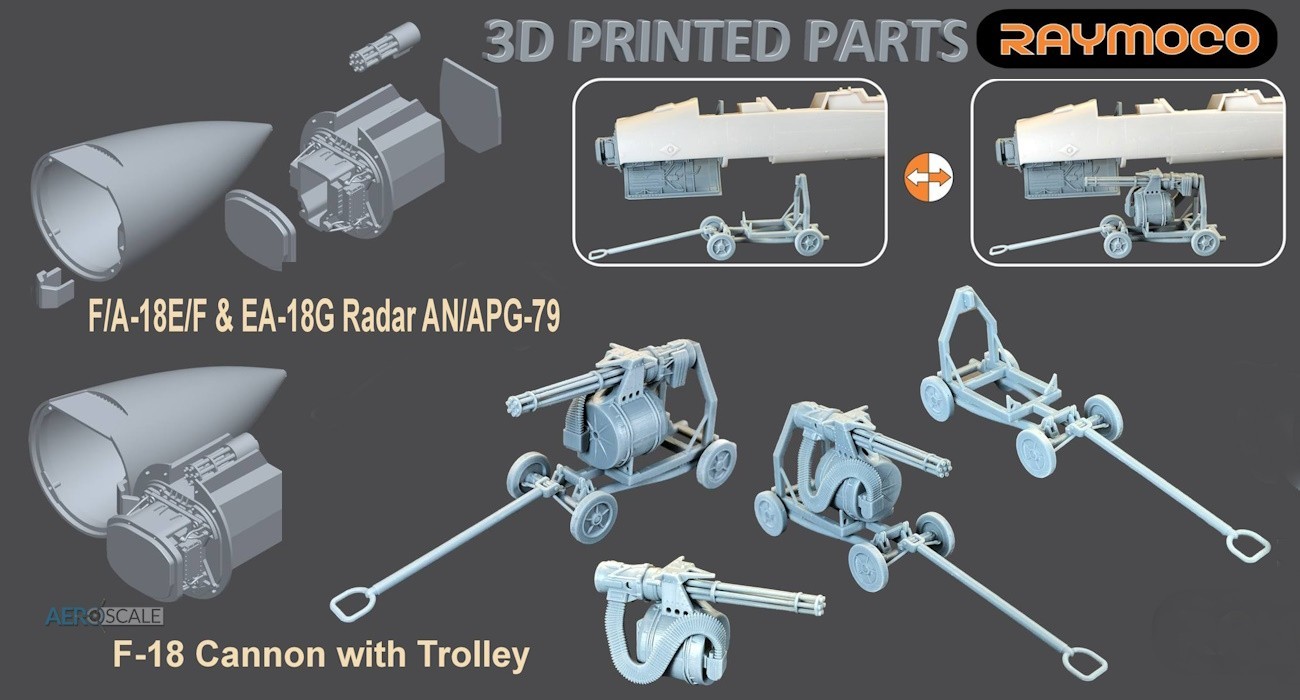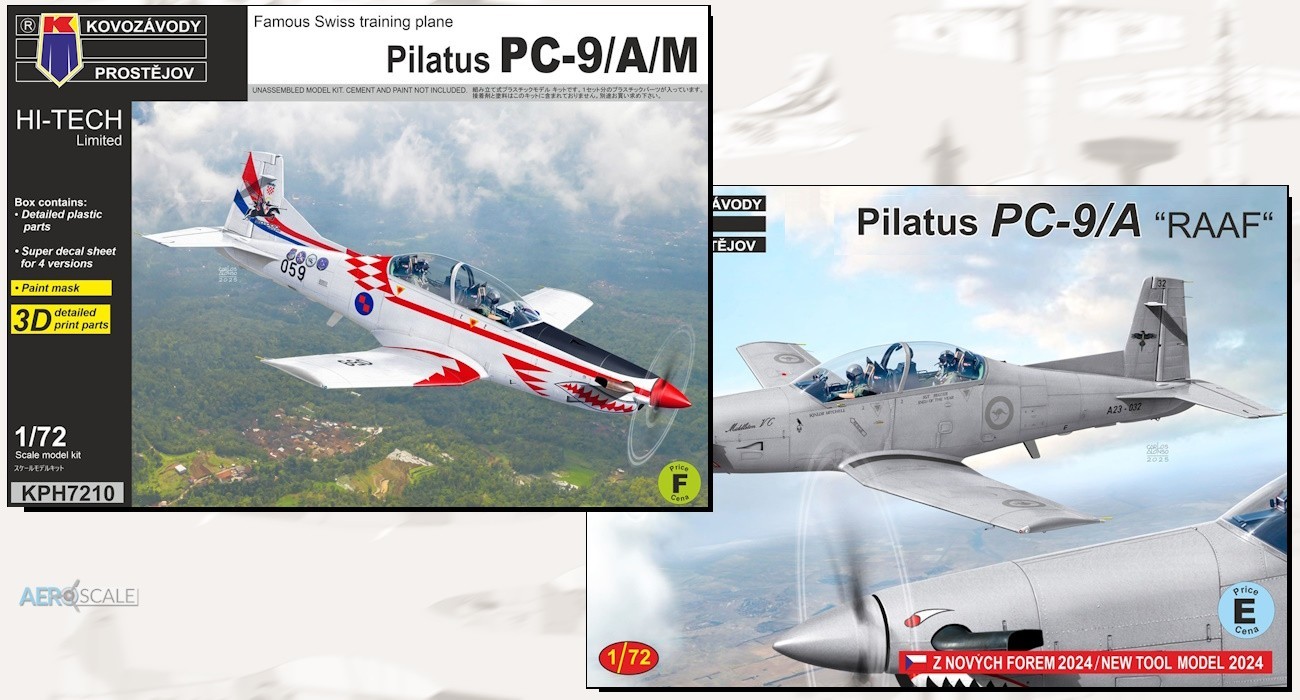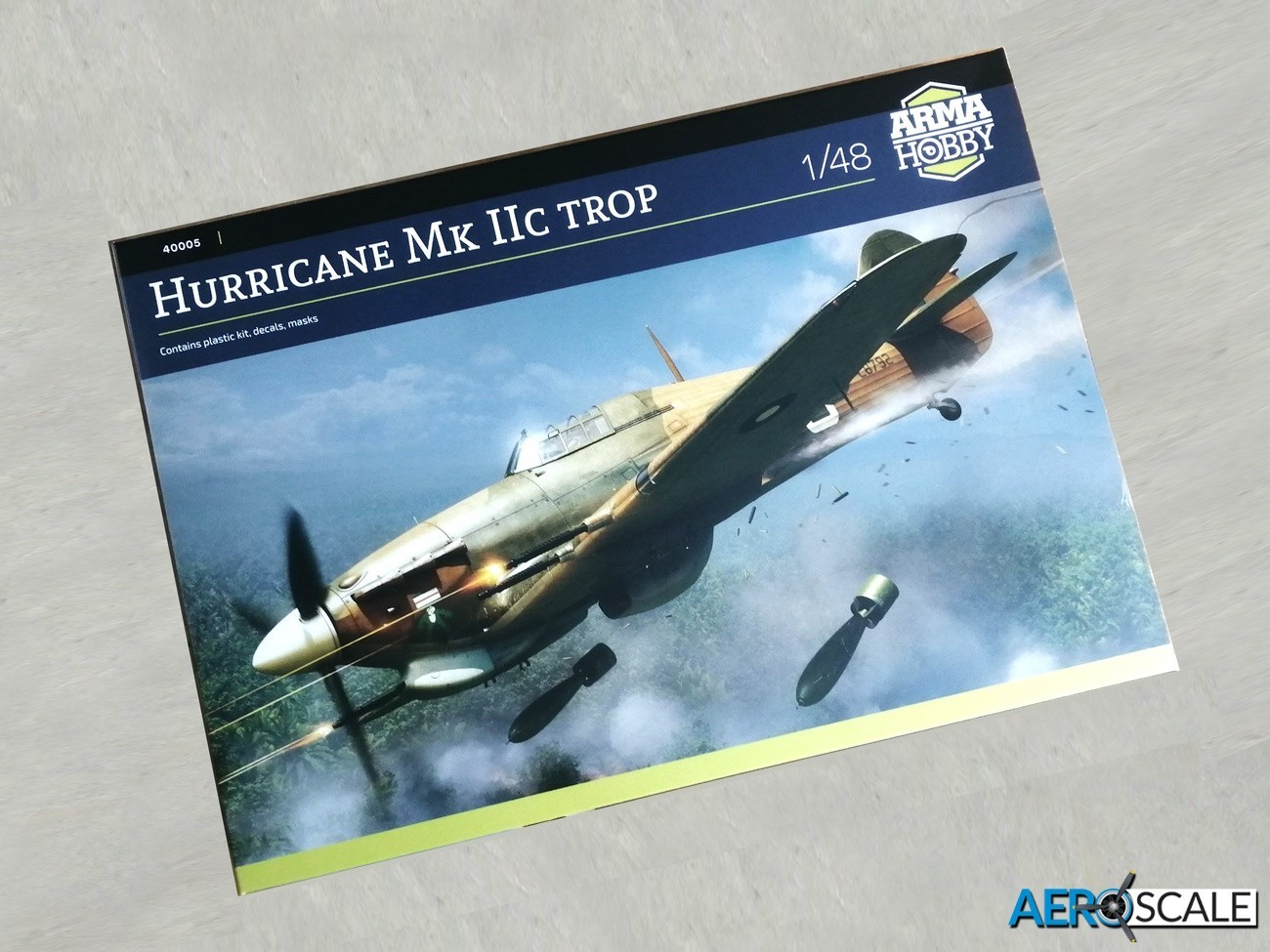
Background
The Hurricane Mk.IIc powered by the Merlin XX engine with two-speed supercharger. was fitted with four wing mounted Hispano Mk.II cannons. The wings were modified so that either 250lb or 500lb bombs could be carried. Later the hardpoint was plumbed so that two fuel tanks could be fitted to extend the range. The introduction of the Mk.IIc came at a time when the gap in performance with the principal Luftwaffe fighters was increasing. The Hurricane had a similar problem with performance against Italian fighter over North Africa. So the Mk.IIc found a new role as a dedicated ground attack aircraft, adopting the name ‘Hurribomber’. It was also employed as a night fighter as well as an intruder fighter. Twelve Hurricane Mk.IIc [NF] night fighters were equipped with pilot-operated air interception Mark VI radar.
Hawker built 1,417 Hurricane Mk.IIc’s from 1941 to the middle of 1943. Around 1,182 Mk.IIc’s were sent over to Russia. The canon armament made it more popular than the earlier Hurricanes armed with ineffectual Browning machine guns.

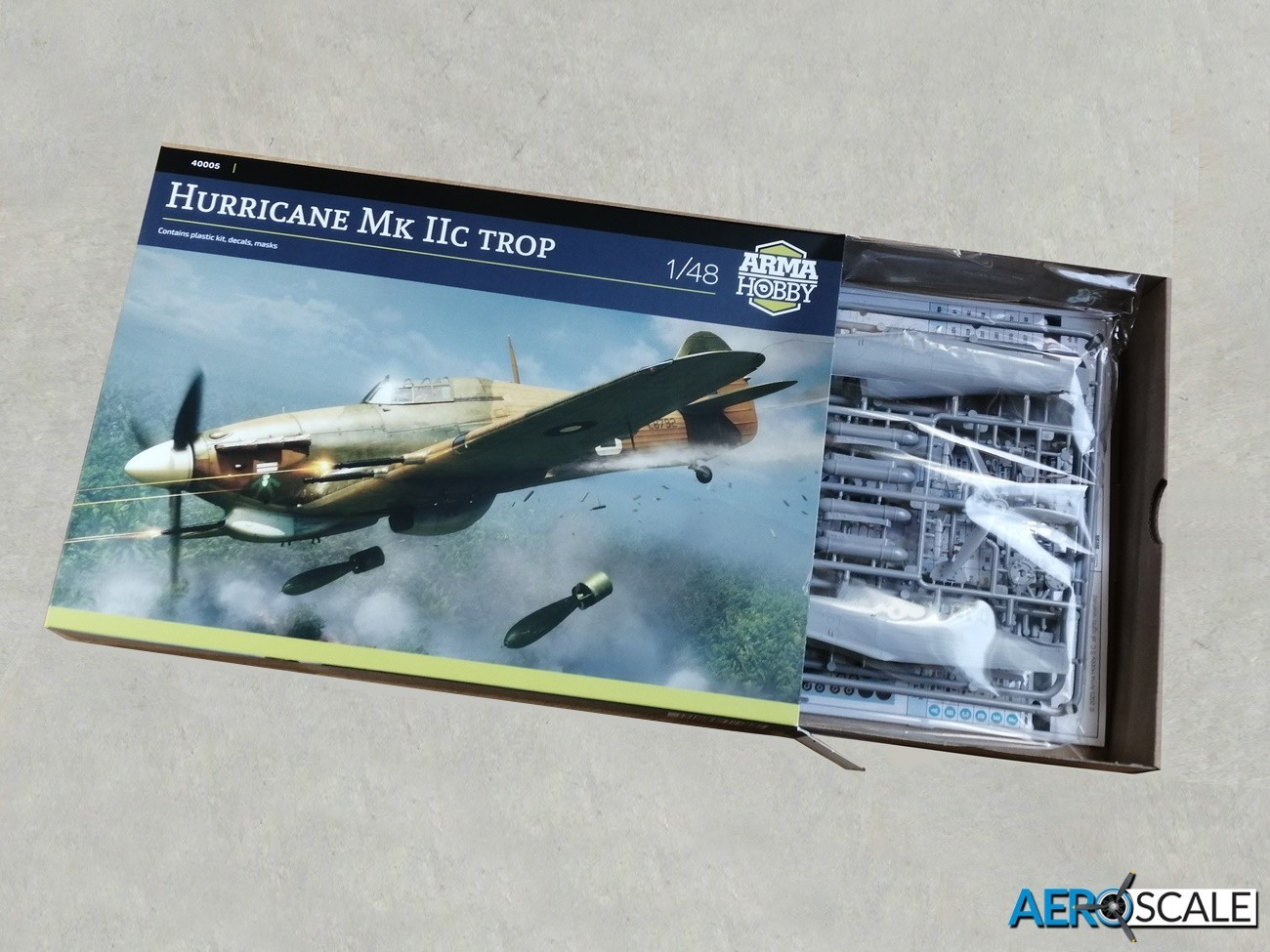
The Kit
Arma Hobby’s first release of the quarter scale Hurricane Mk.Iic has been sold out with good reason. The second edition portrays the tropicalised version with the distinctive Volkes filter on the nose. An example of the ‘Hurribomber’ is included in the marking options.

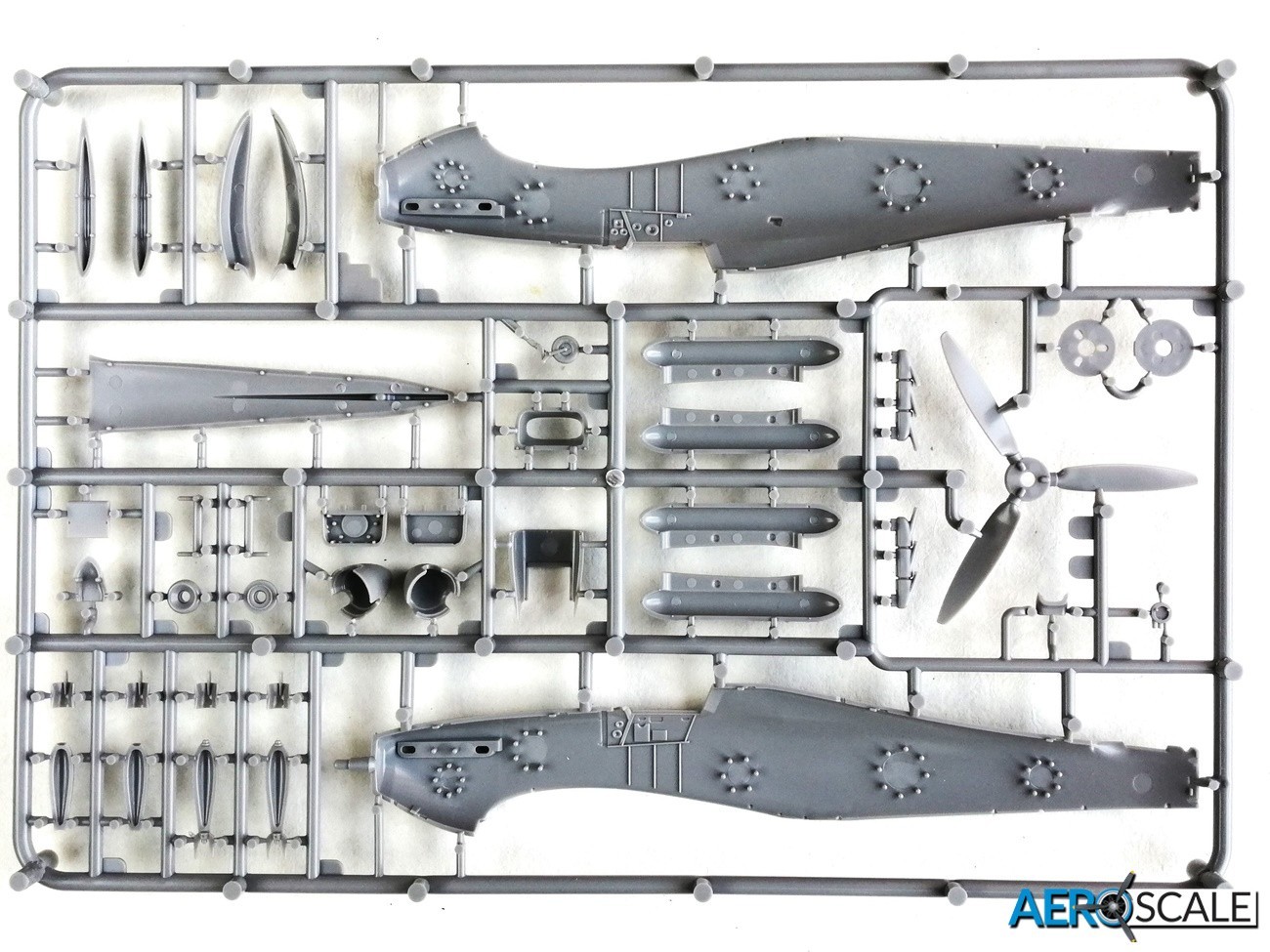
The kit comes in a side opening box. Inside is a robust card tray, which should stop the usual problems of collapse associated with stacking side opening boxes. All the parts are contained in a sealed bag, with the clear sprue in its own sealed bag. Decals and paint masks are slipped into the instructions.
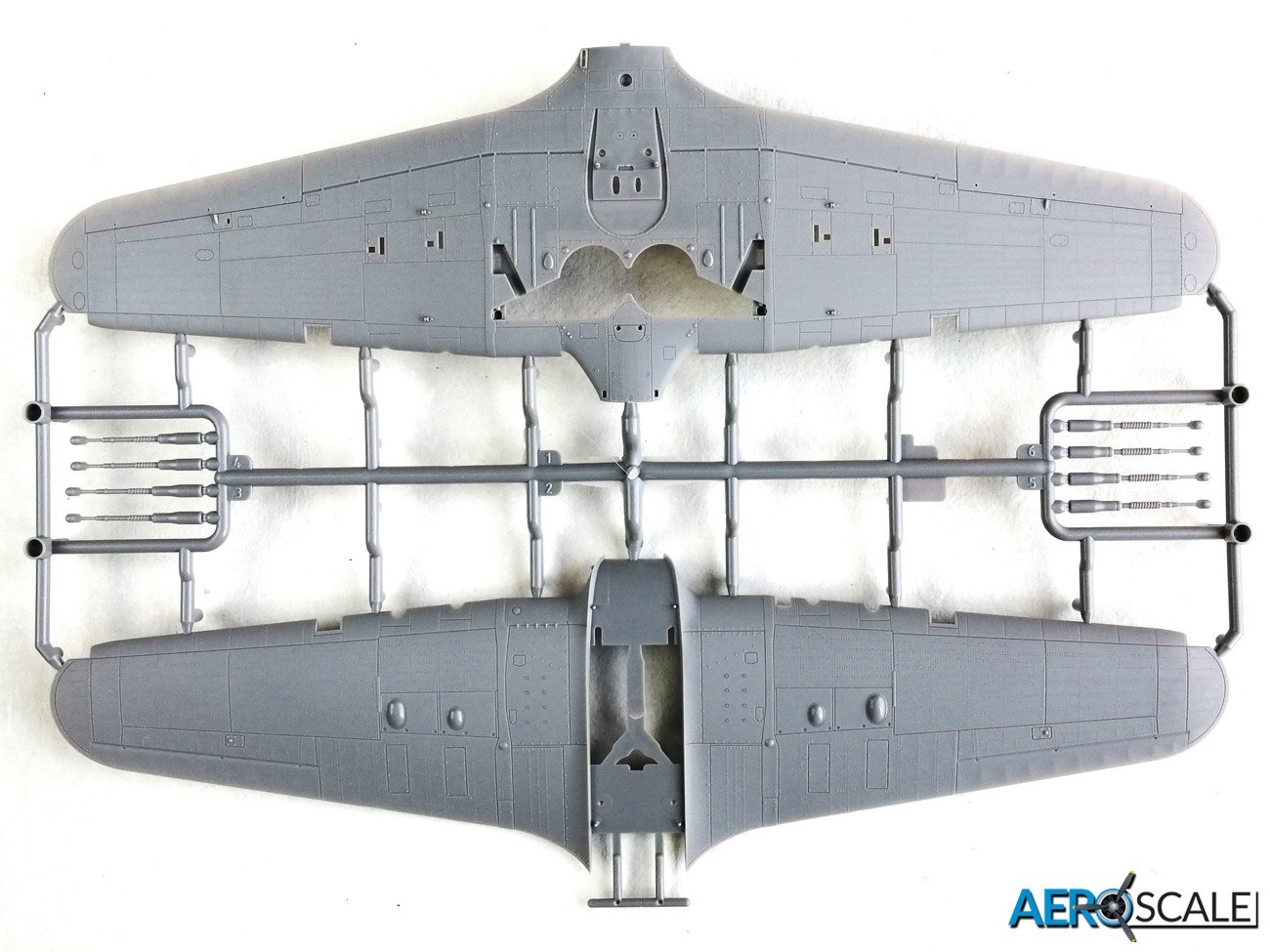
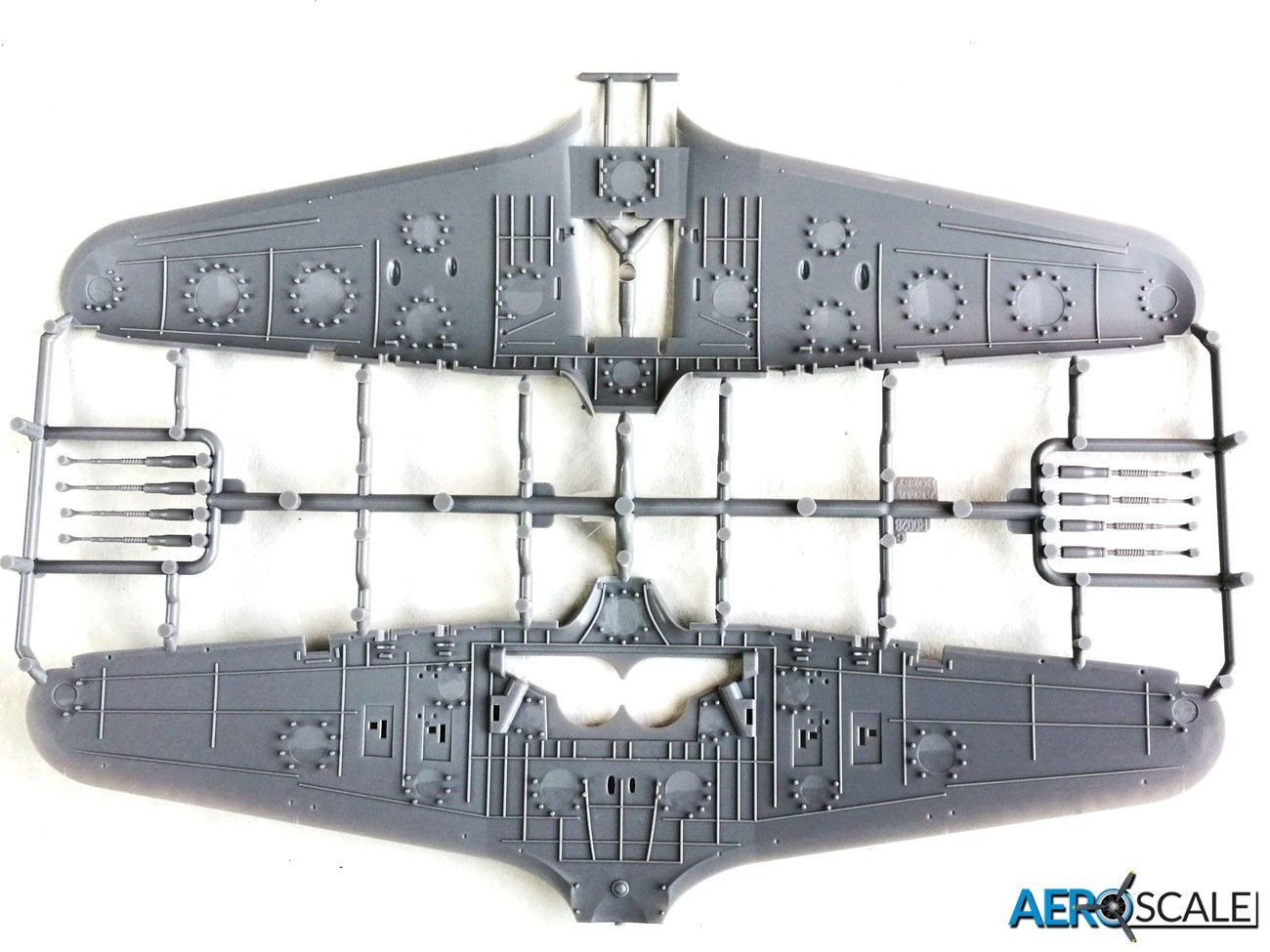
The Hurricane has a mix of canvas and metal skinning, which is replicated beautifully. The raised and flush riveting, fasteners, fuel tank vents and piano hinges are particularly well executed. The rear of the fuselage, tail and control surfaces has a hint of the stretched fabric. The parts break down bear no resemblance to Arma Hobby’s series of 1:72 scale kits. They have taken a fresh approach to the quarter scale editions. Detail of the various areas including the cockpit and undercarriage bay are well thought out. Arma Hobby has were possible created individual parts rather than relying on low relief detail, achieving a more realistic look.


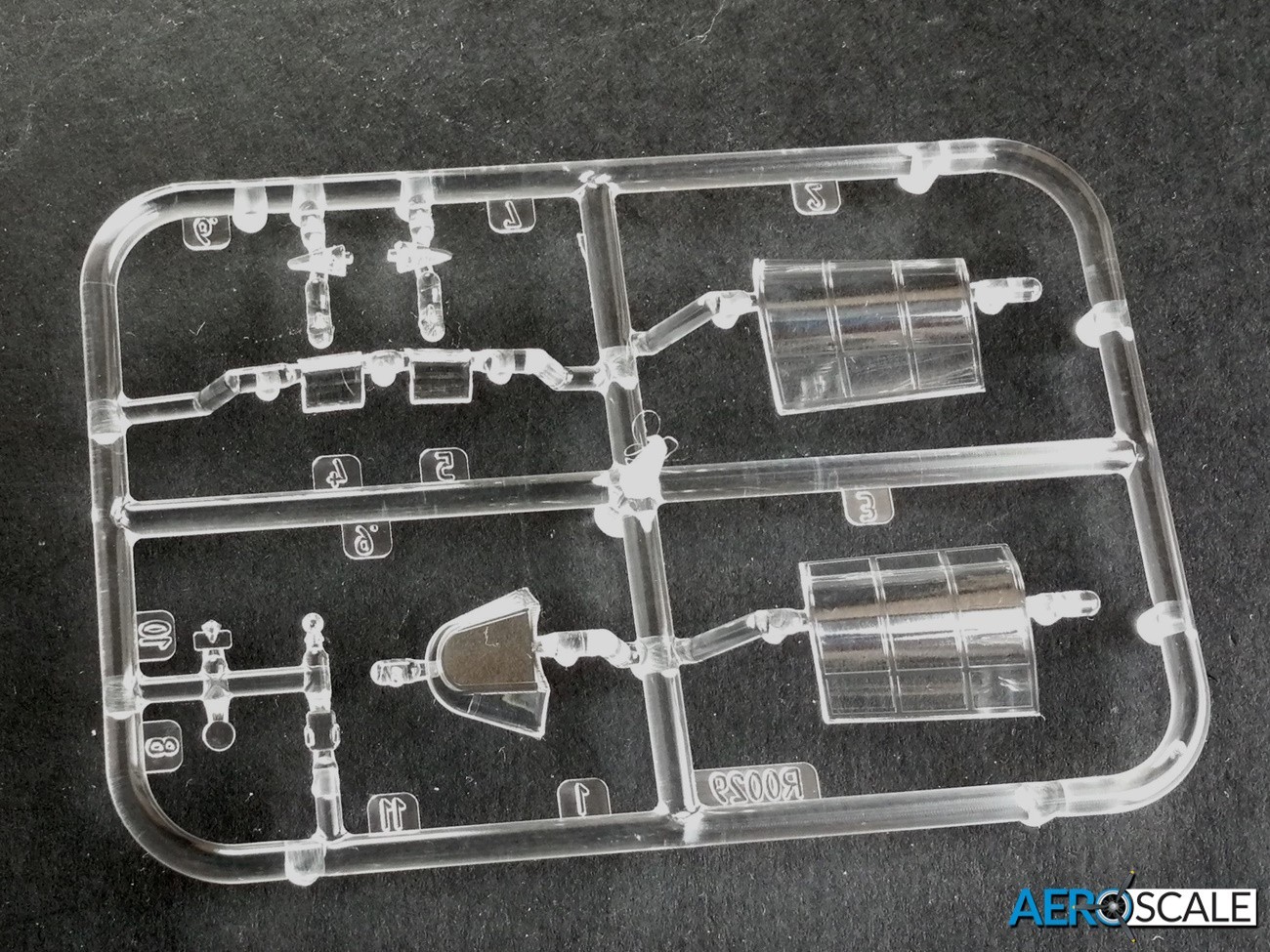
Contents of this 1:48 scale kit includes:
- 3 x grey plastic sprues
- 1 x clear plastic sprues
- 1 x sheet of paint masks
- 1 x sheet of decals
- 1 x A4 12-page instruction manual

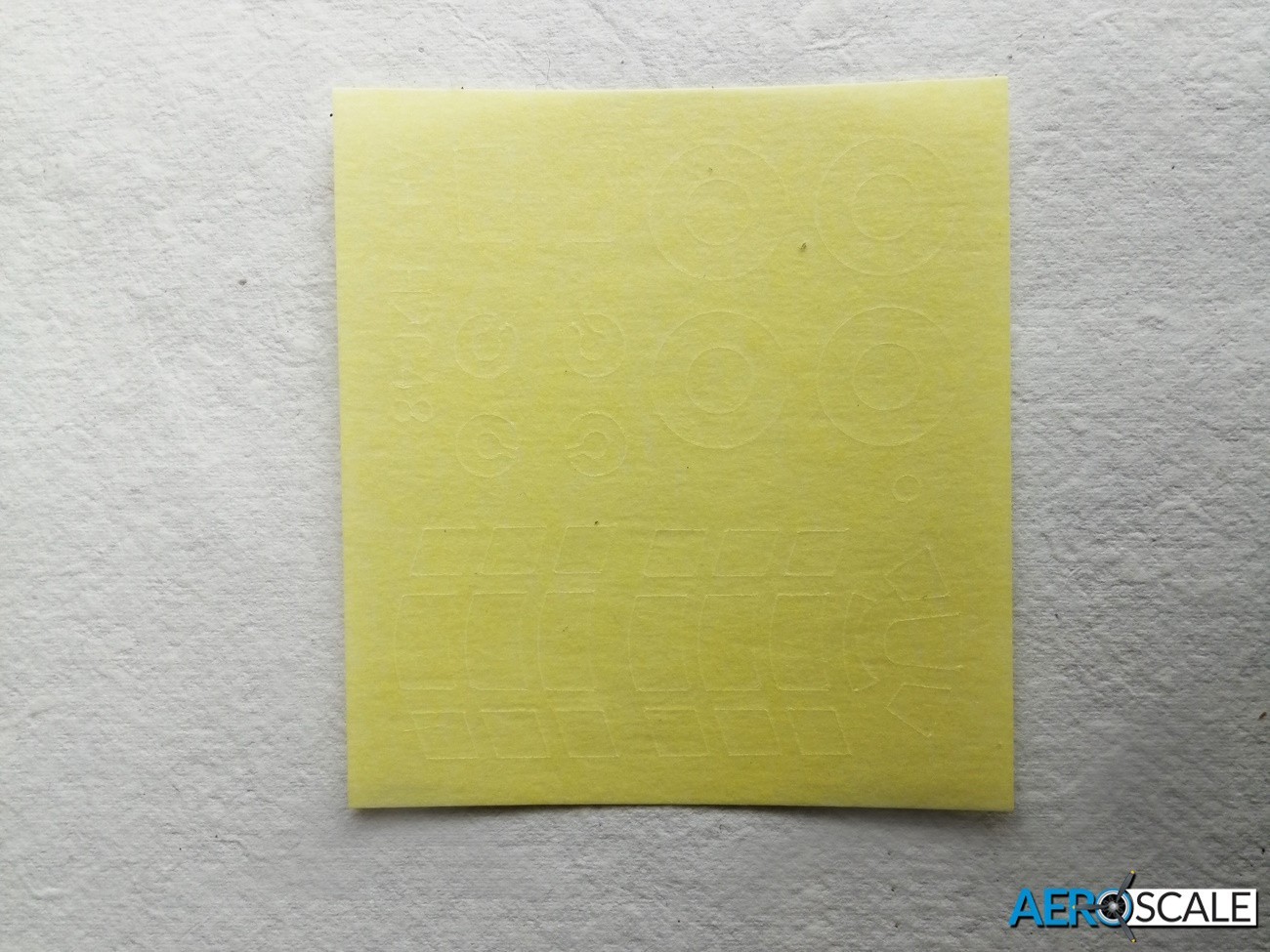
The cockpit is made up from twenty-nine plastic parts, making up what should be a be detailed office. The instrument panel has raised instruments with a decal to create the detail for the instrument faces and switches. There are also decals for some of the instruments on the sidewall. Most of the cockpit components are fitted on the bridge between the upper half of the wing. There is no floor as such, just a couple of runner boards for the pilot’s feet mounted on a tubular framework. The piping containing the control cables from the control stick and rudder pedals are also included. There is some raised detailing on the inside walls of the fuselage. Some shrinkage is visible on the outer skin corresponding to the location of the instruments. Nothing major though. The separate tubular framework adds further to the detail along with the numerous small parts. The detail on all the components for the cockpit is superb. The four-part seat includes the seat height adjustment lever. The seat fits onto a large armoured panel. Decals represent the seat belts.
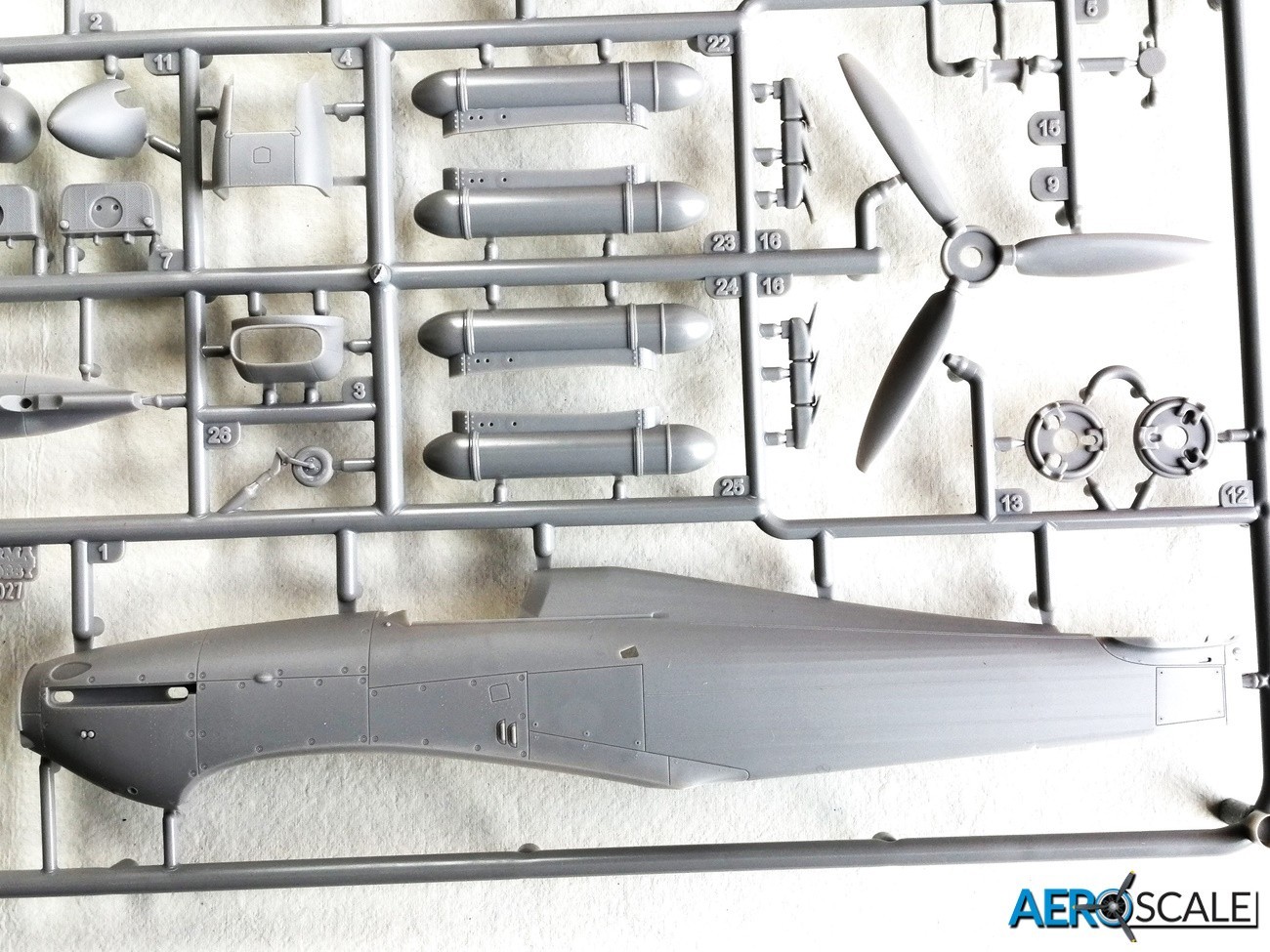

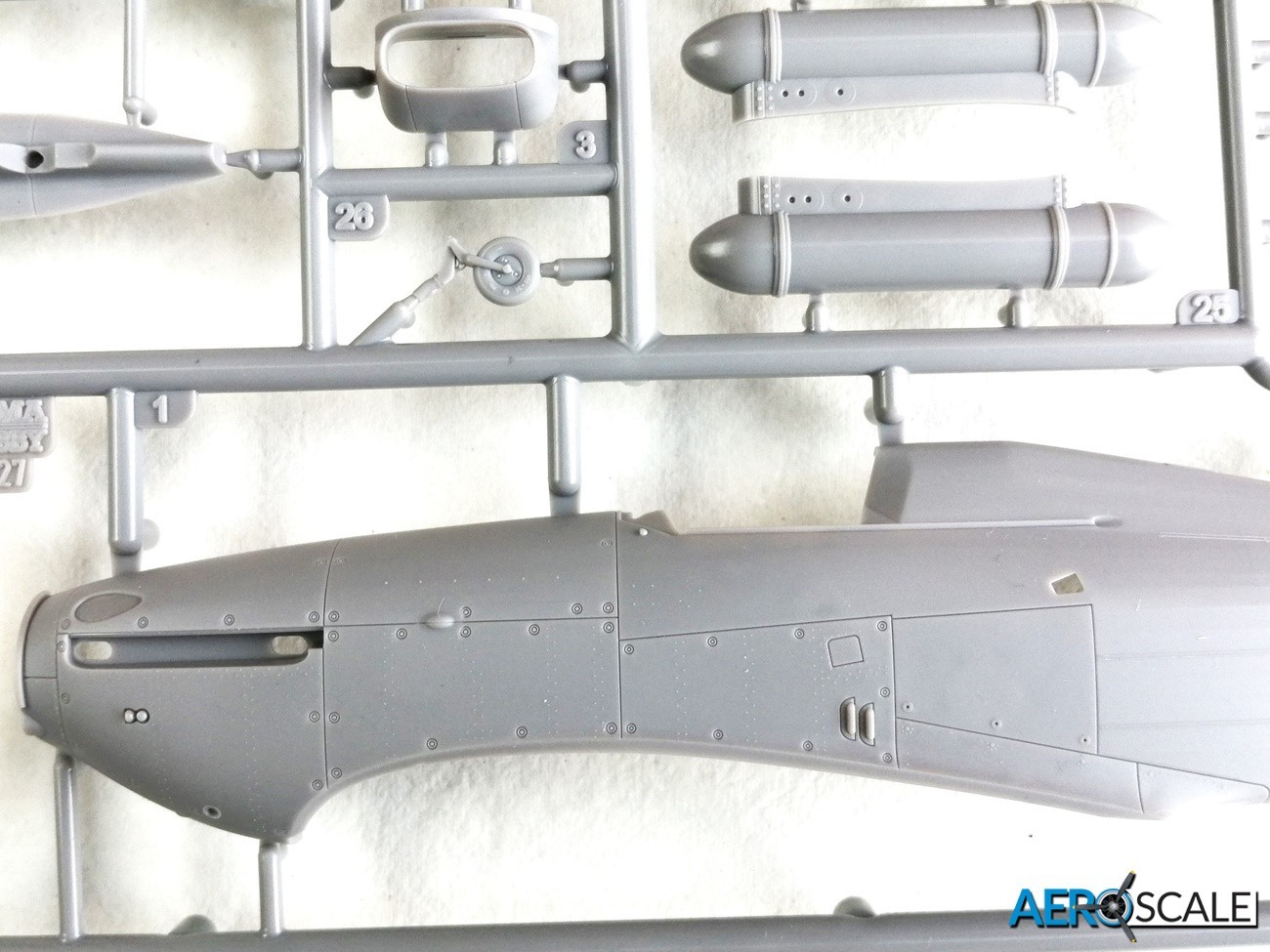


The transparent parts are commendably thin and crystal clear. The canopy and windscreen are separate. There are two canopies: one for the open position and the other for closed. There are paint masks for these clear parts. The small errata sheet highlights the need to remove some of the plastic where the runners would be. Included are two types of rear looking mirror mounted on the windscreen.
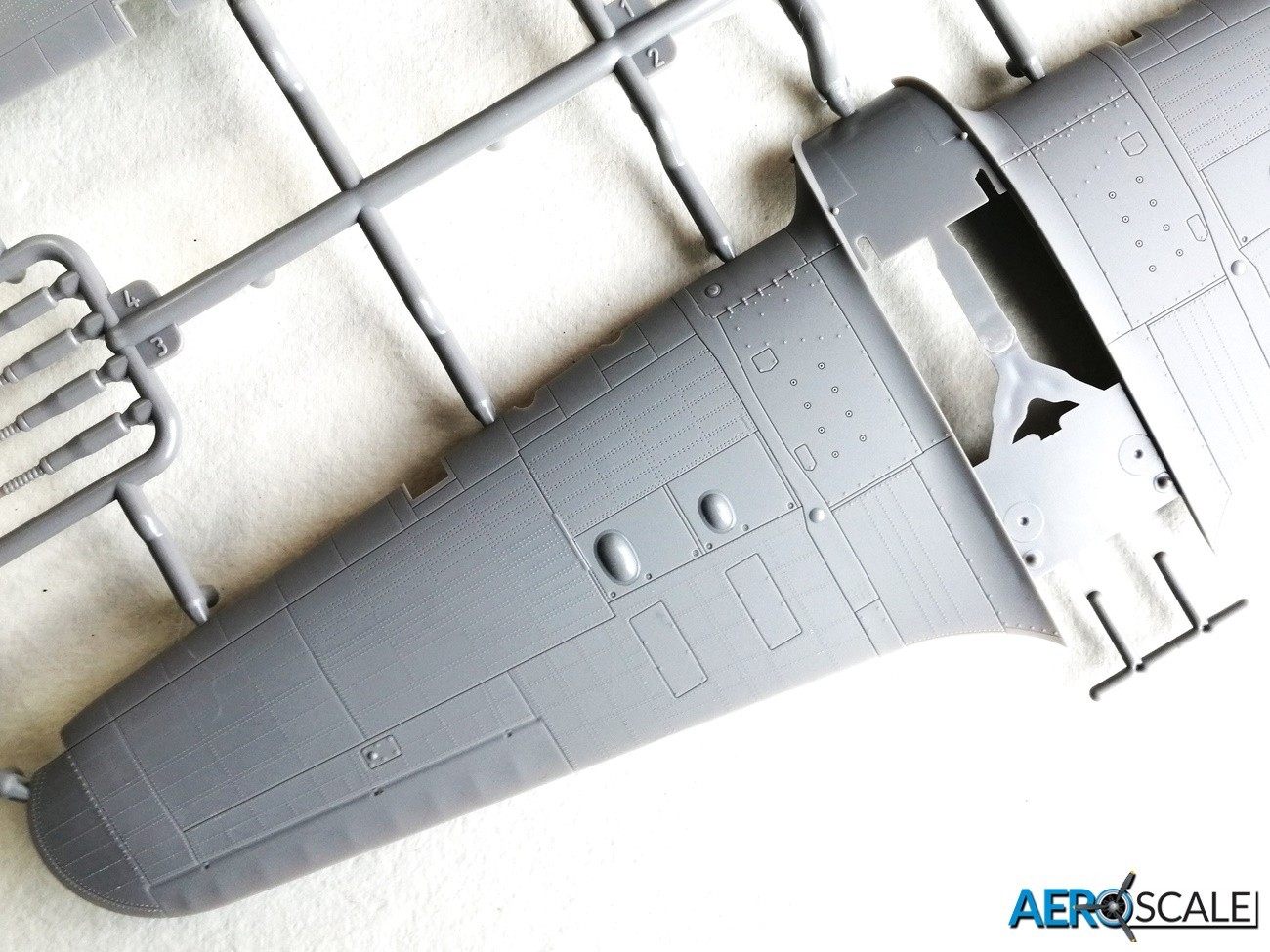
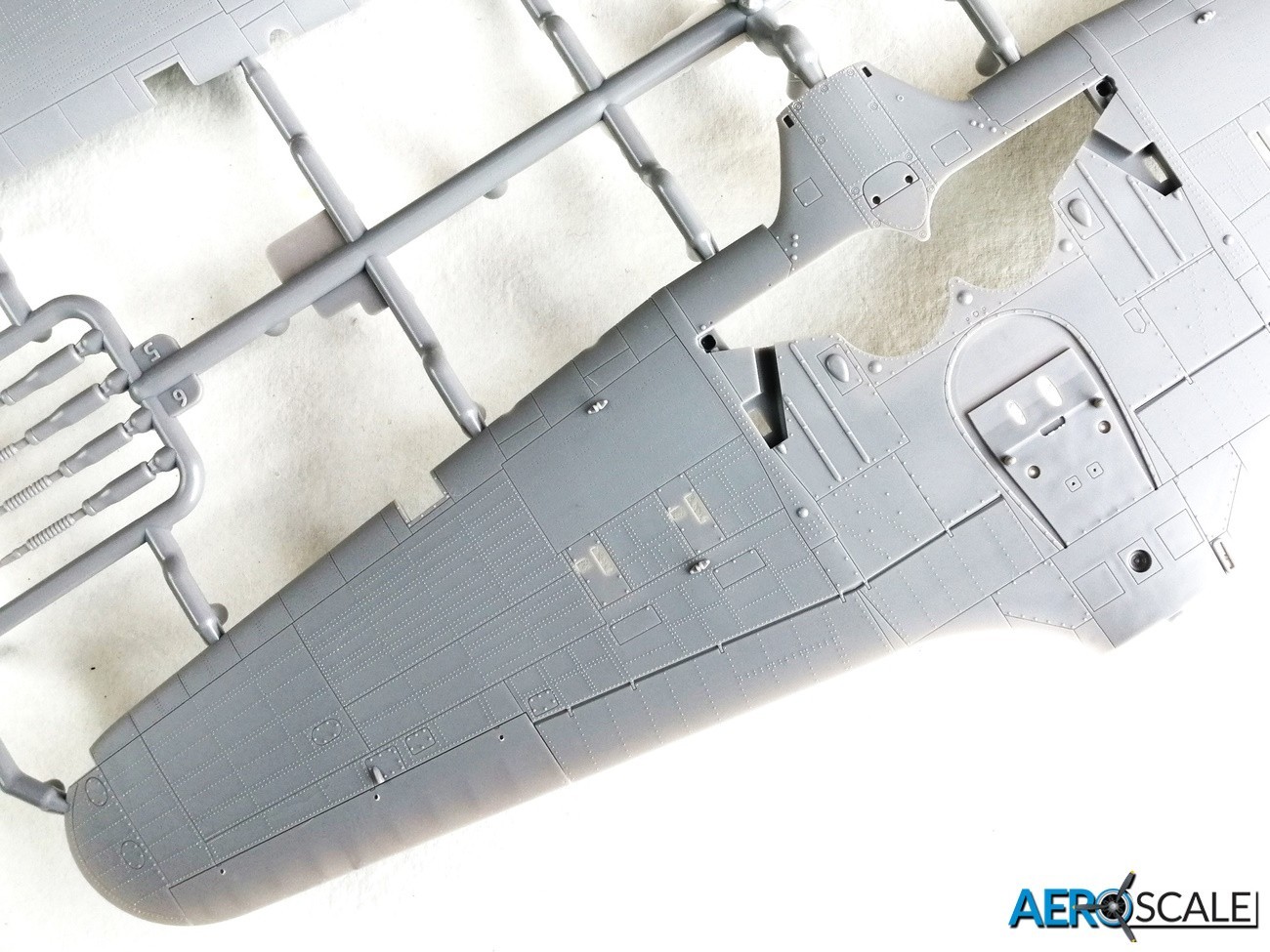
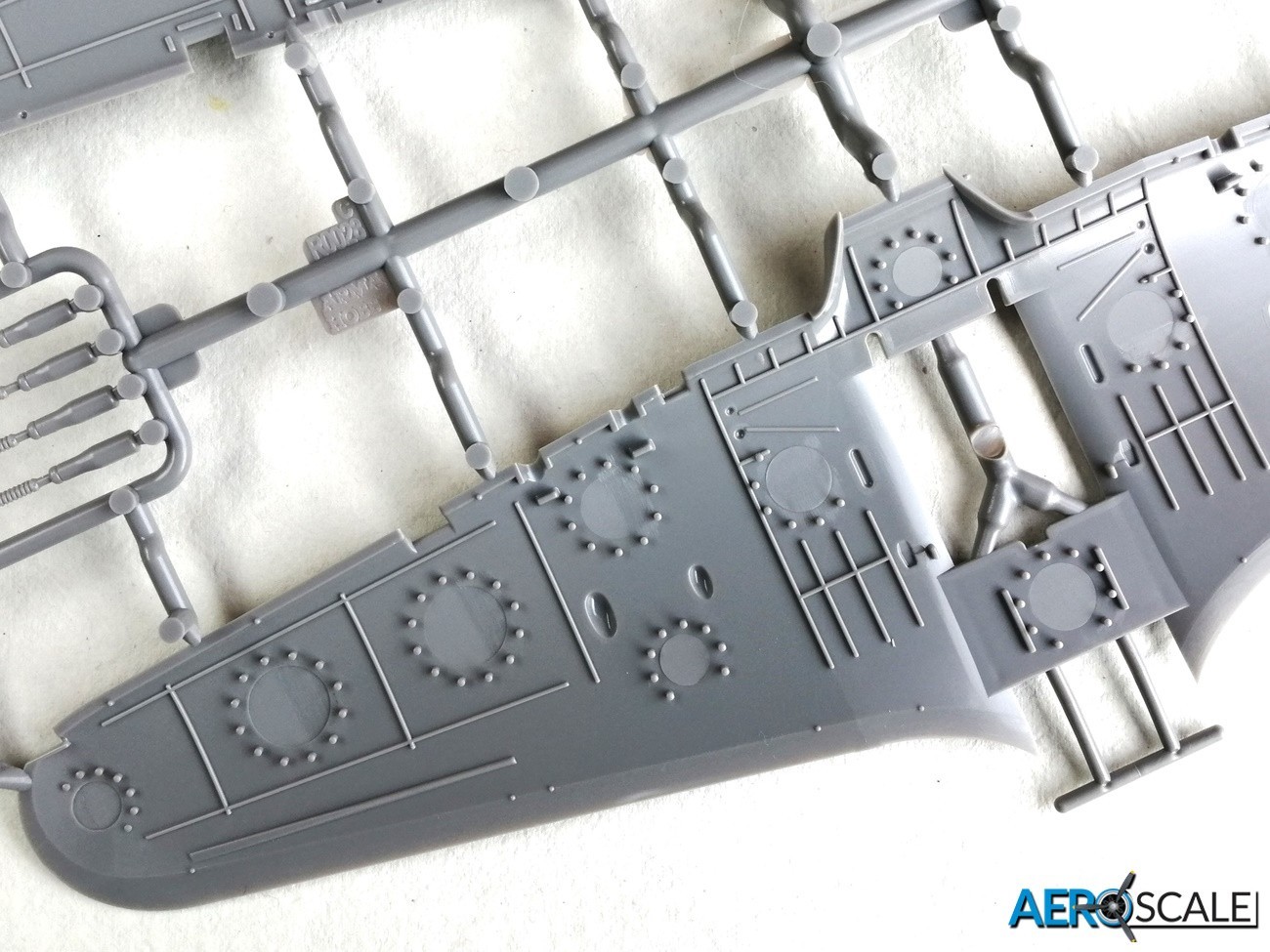
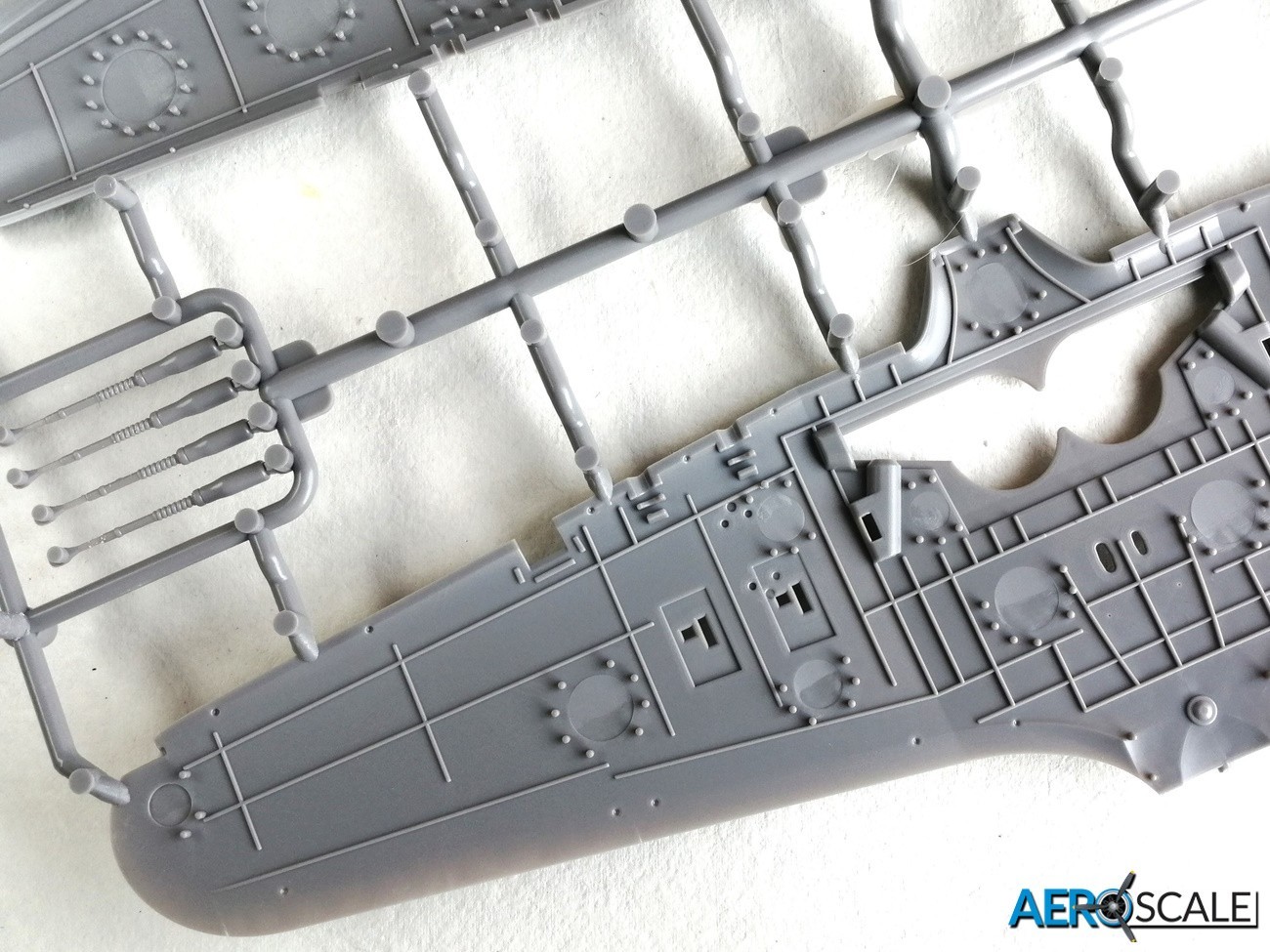
The fuselage is split traditionally into left and right halves. The rear lower ventral area is separate obviously to accommodate different marks including the carrier based versions of the Hurricane Mk.II. The vertical tail is separate and made up from two parts. The rudder is one piece. The short mast on top of the tail surface needs to be removed. The belly radiator fairing is separate and made up from four parts. The flap to the rear is separate and positionable. The radiator faces are made up from three parts. The moulded detail on the radiator faces is superb. Once completed its fitted to the recessed area in the belly. The carburettor intake fairing just in front of the undercarriage bay is made up from two parts. The prop is made up from four parts, with two alternate spinners. The oil collector ring behind the spinner is moulded onto the nose. The nose blisters are separate

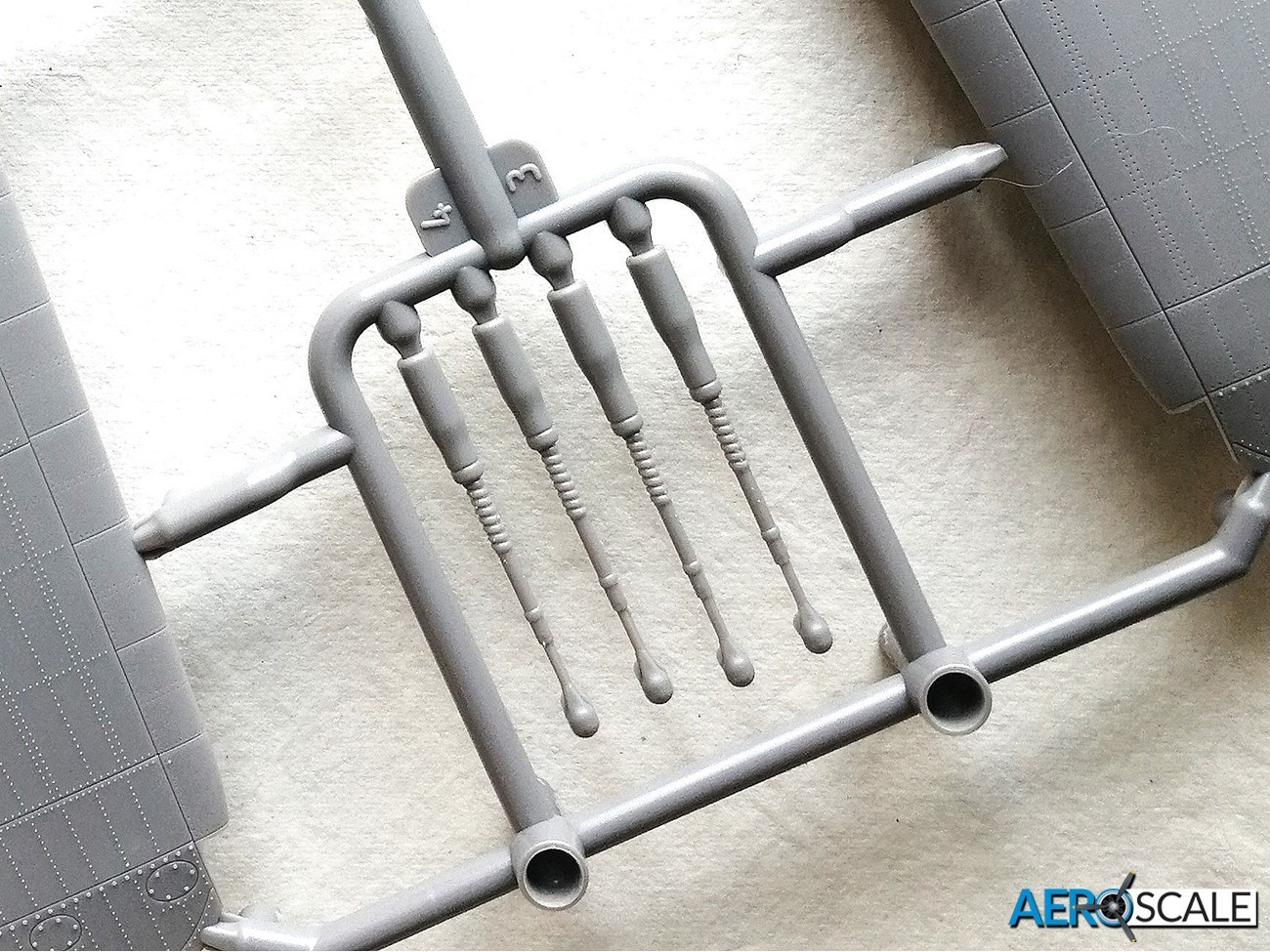



Both upper and lower wing parts are full span. The upper wing is bridged by base of the cockpit. The ailerons and flaps are moulded with the wings. Holes need to be drilled to fit the fuel tanks. Bombs are supplied, but not used with any of the marking options. Some detail needs to be removed from the wing to depict accurately the Mark IIc, the instructions provide full details. A nice touch is the separate landing light parts. Not just the clear parts, but the reflector is reproduced. The erratum sheet highlights the need to remove a short length of the raised line on the inside of the upper wing. Perhaps so that the landing light reflector has a better fit. There are two versions of the canon barrels fitted to the wing leading edge.
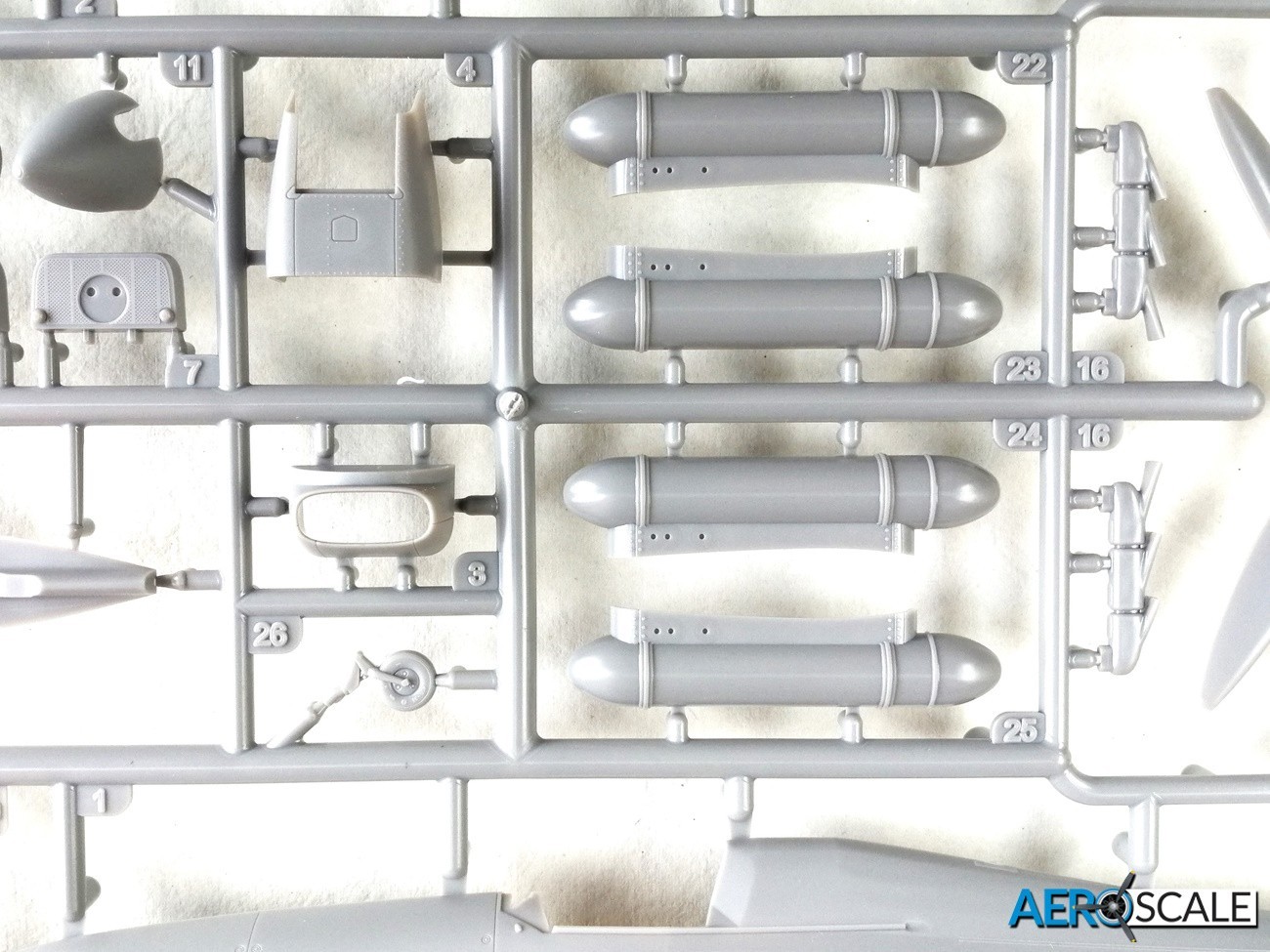
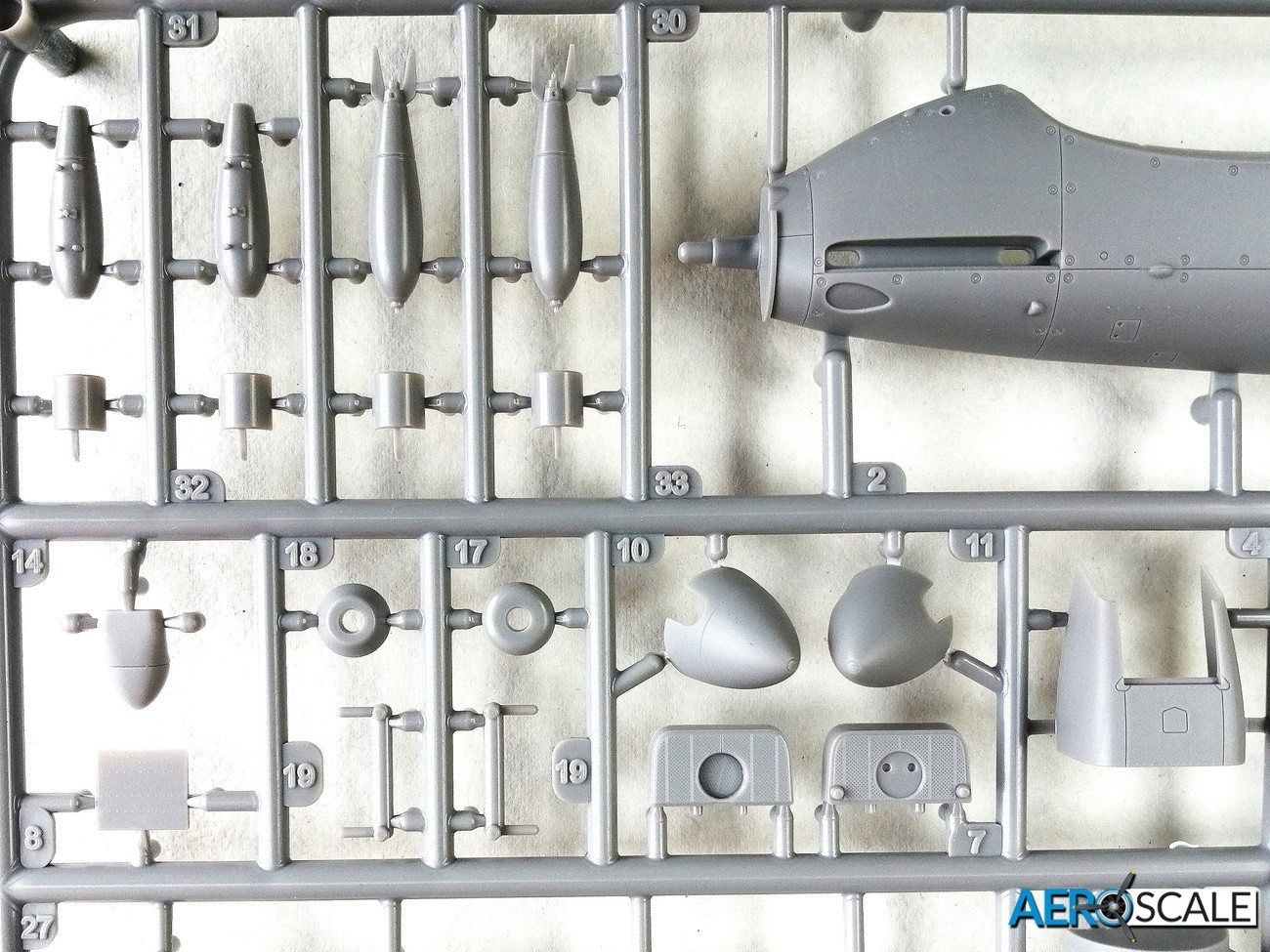

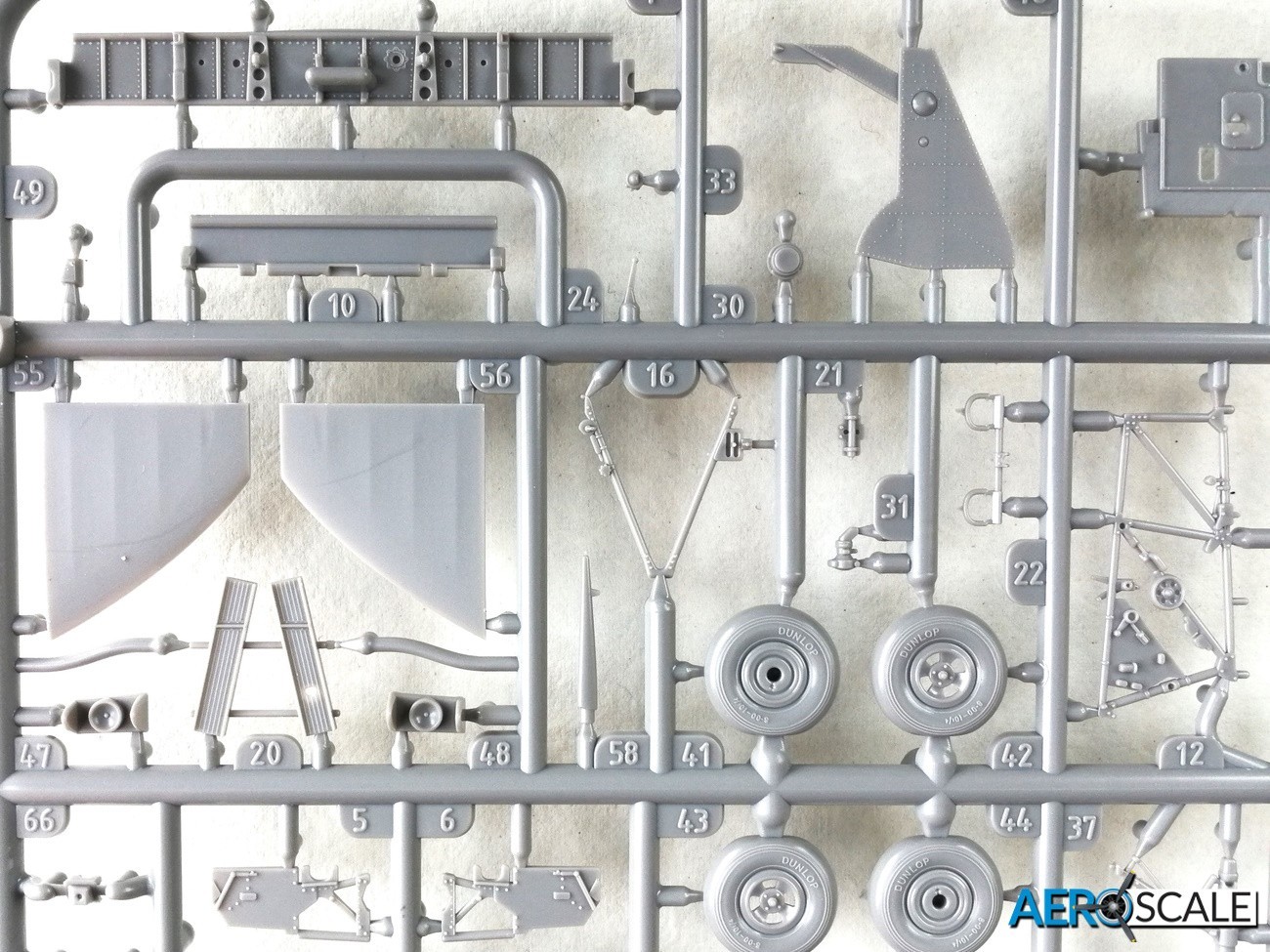
The undercarriage bay is made up from eleven detailed parts and that does not include the undercarriage gear itself. The main undercarriage oleo has separate retracting jacks. The detail on the inside of the main undercarriage door is very good. The weighted main wheels are split in half and masks are included. The manufactures name is a raised detail on the walls of the tyres. There are two choices of tail wheel, and these have paint masks too.
The external fuel tanks are two-part with separate wing attachment pins. The bombs are four-part with commendably thin annular stabilisers, though these are not fitted on any of the marking options.
There are Kabuki style paint masks for the windscreen, canopies, landing lights and main wheels as well as the tail wheels.
Decals are printed by Techmod. They look excellent with good colour density and the registration is excellent. The definition is very good particularly on the stencils and instruments.
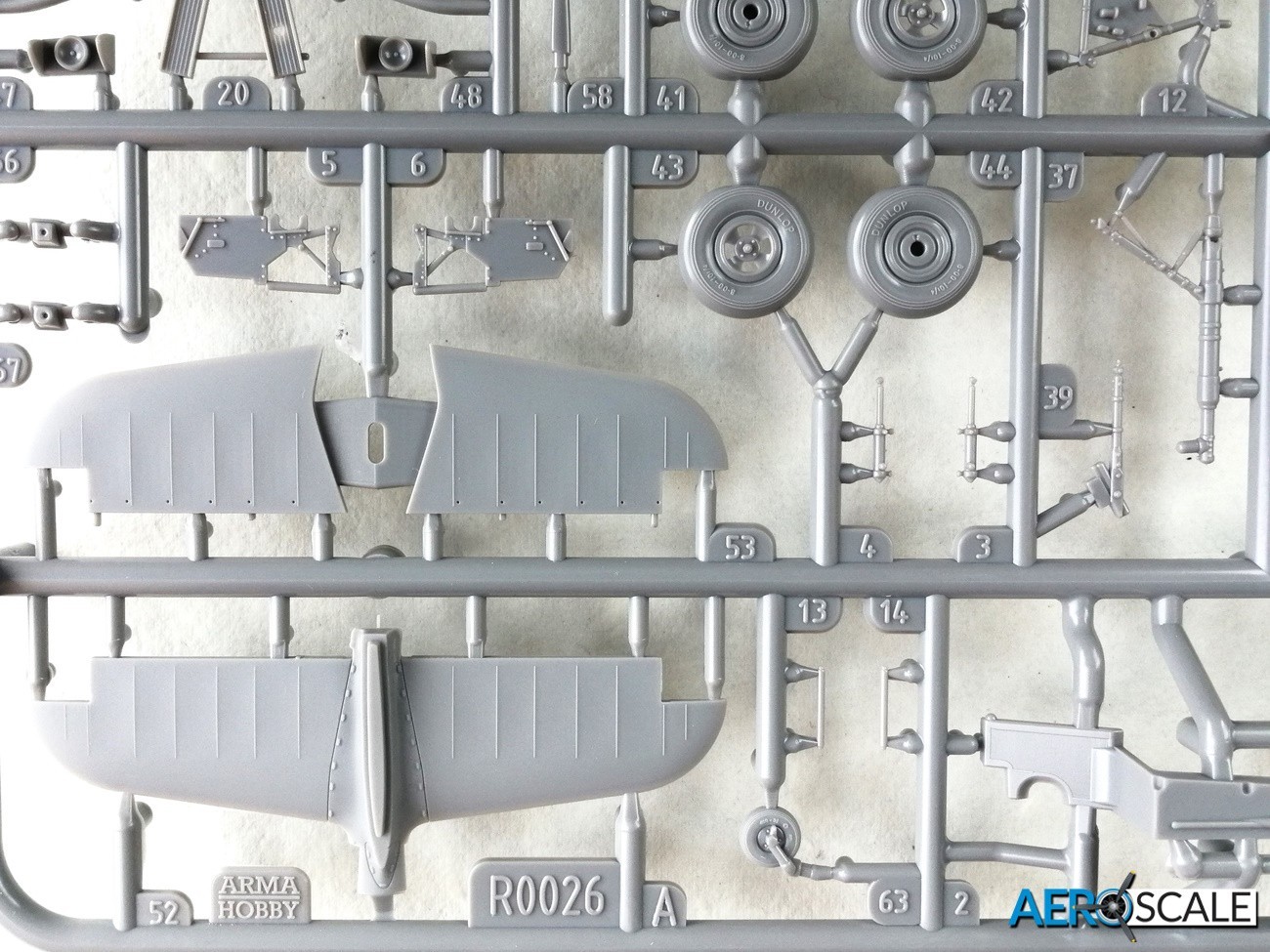
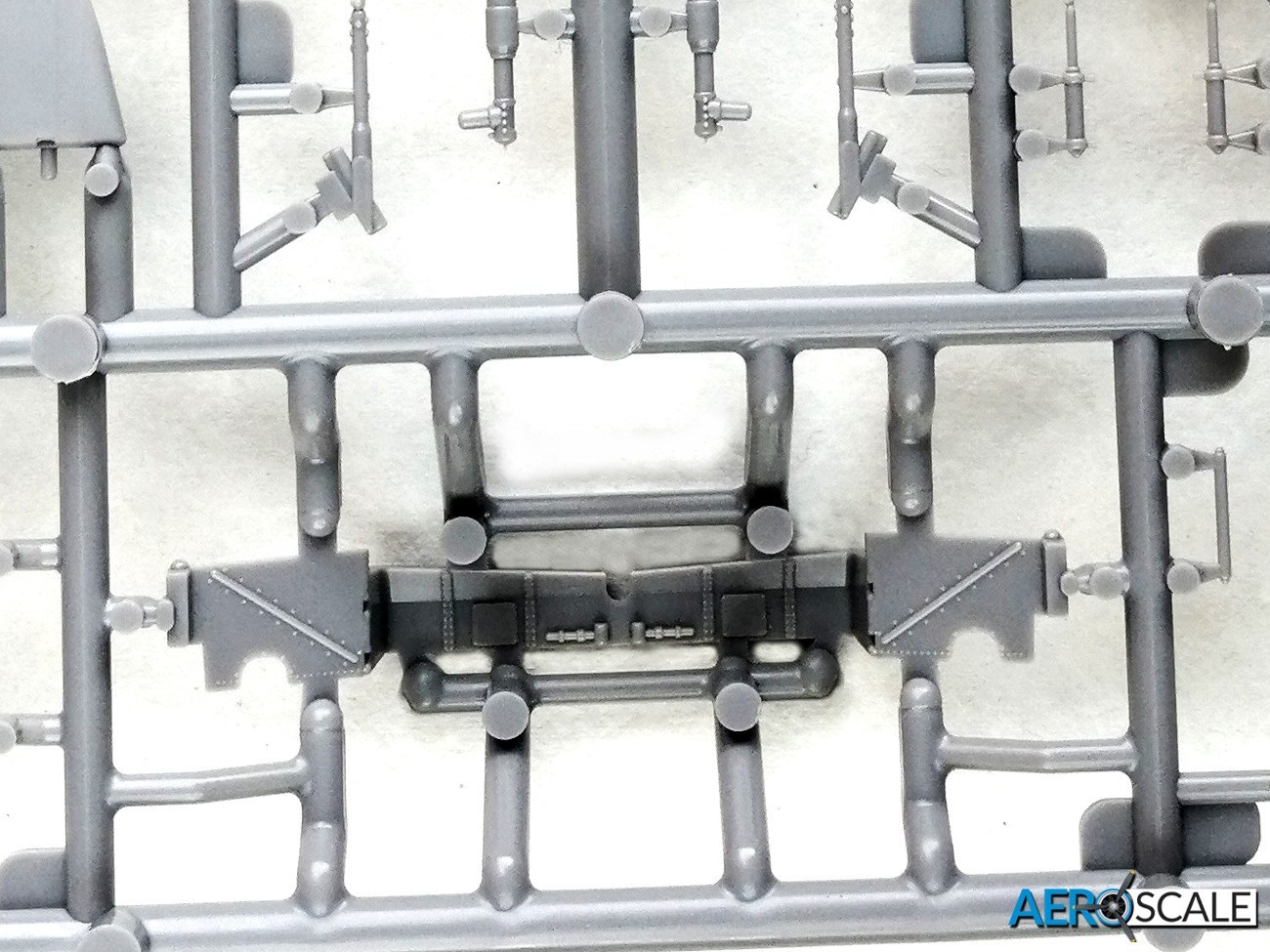
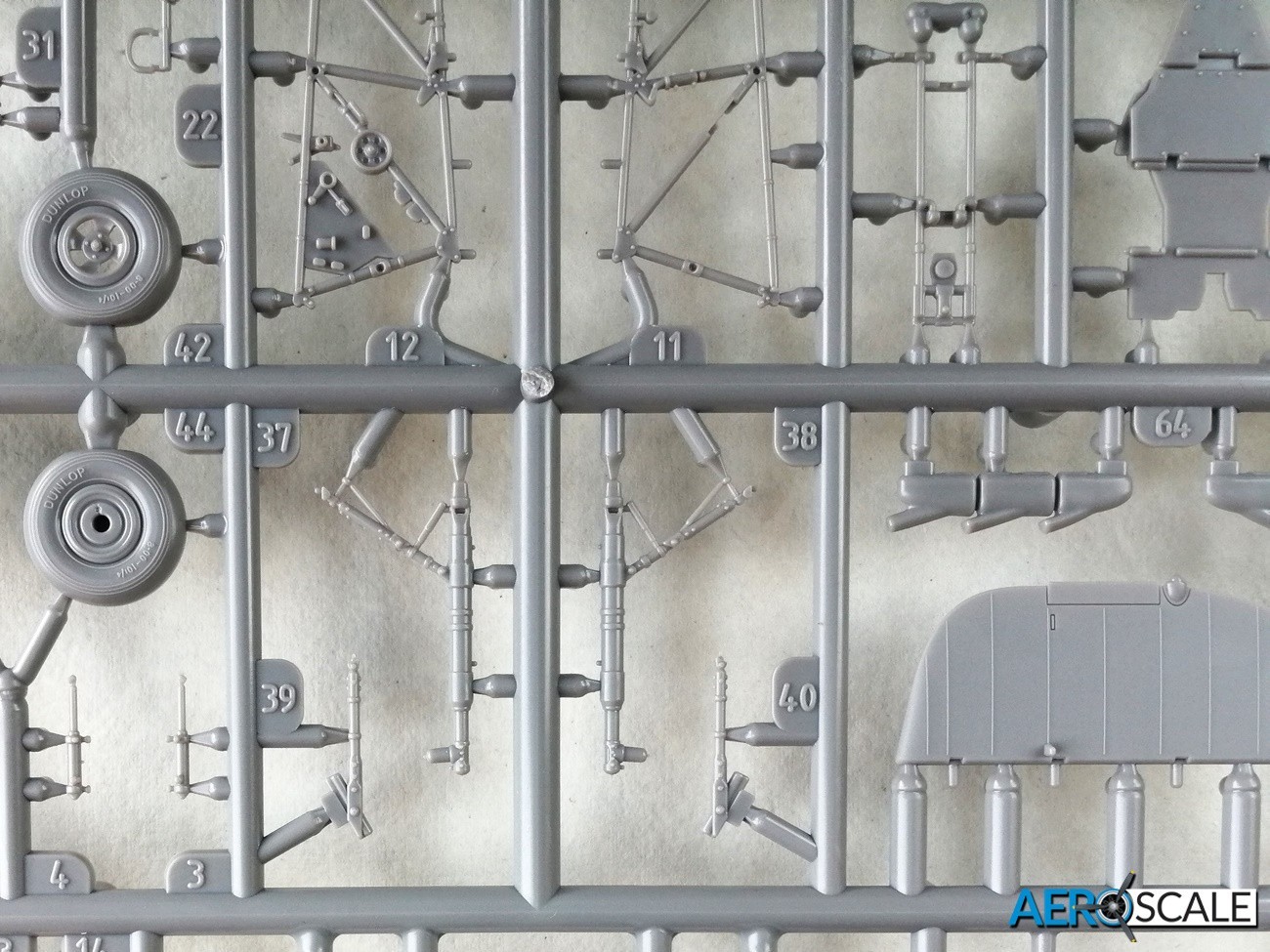
Instructions
The black line drawings are explicit with written instructions in English and Polish. There are several modifications and differences with the marking options so pay close attention to each stage of the build. There are a number of paint manufactures referenced in the instructions including: Hataka, AK RC, Lifecolor, Ammo, Humbrol, Vallejo and Tamiya. FS numbers are provided for all the colours except sky blue.
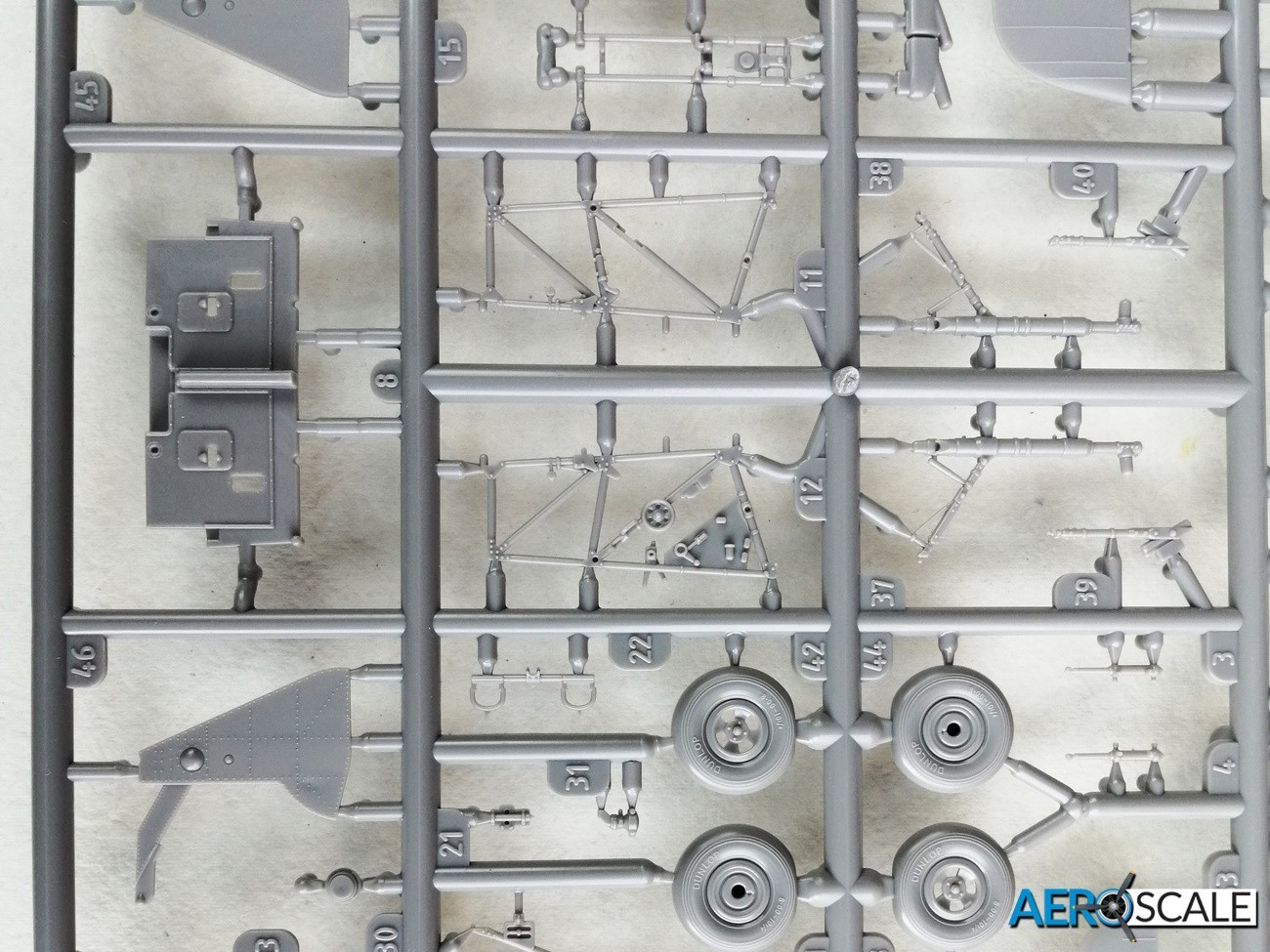

Marking options.
- Hurricane Mk. IIc trop “Hurribomber”, LB792/C, No. 34 Squadron RAF/SEAC, Dergaon (Assam) i Imphal (Manipur), spring 1944, pilot S/Ldr C.P.N. Newman.
- Hurricane Mk IIc trop, HL885/AX-Z, No. 1 Squadron SAAF, Lt. Stewart “Bomb” Finney, LG142, Egypt, September 1942.
- Hurricane Mk.IIc Trop, HL851/GO-P “The MacRobert Fighter-Sir Iain”, No. 94 Squadron RAF, El Gamil airfield, Egypt 1942-43.
Option 1 is painted dark green and dark earth on the upper surface and medium sea grey on the under surface. Options 2 and 3 upper surfaces are painted dark earth and mid stone with azure blue under surfaces. Option 2 has only two of the canon barrels fitted. Option 3 is interesting as its one of the MacRobert Hurricanes and is named ‘Sir Iain’. It had wing fuel tanks fitted as the azure blue was applied around the drop tank masking the original sky colour. So, it is a detail worth noting if you decide not to fit the tanks. Also, with this option there are variations on the decals sheet covering the Squadron codes.
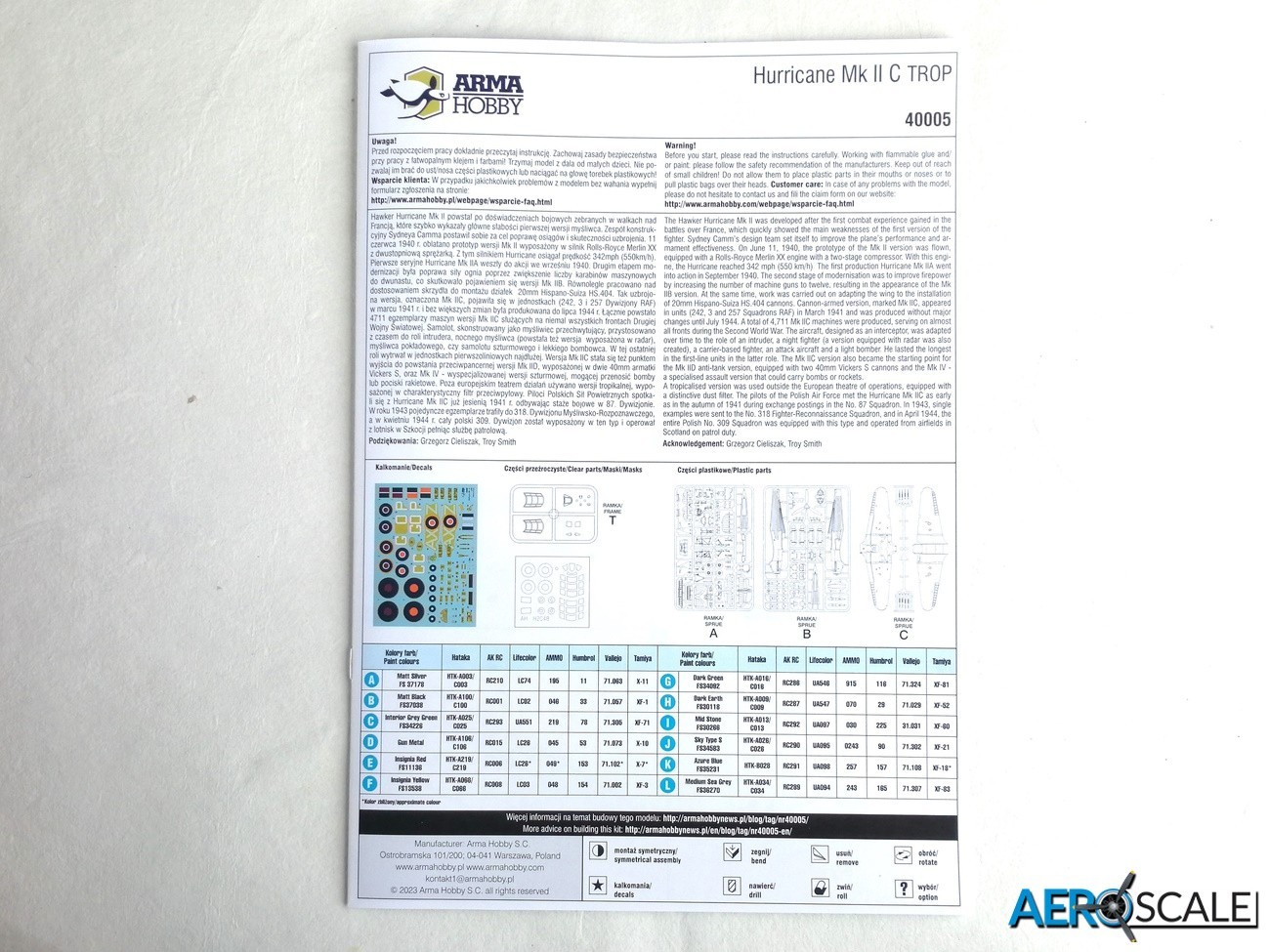
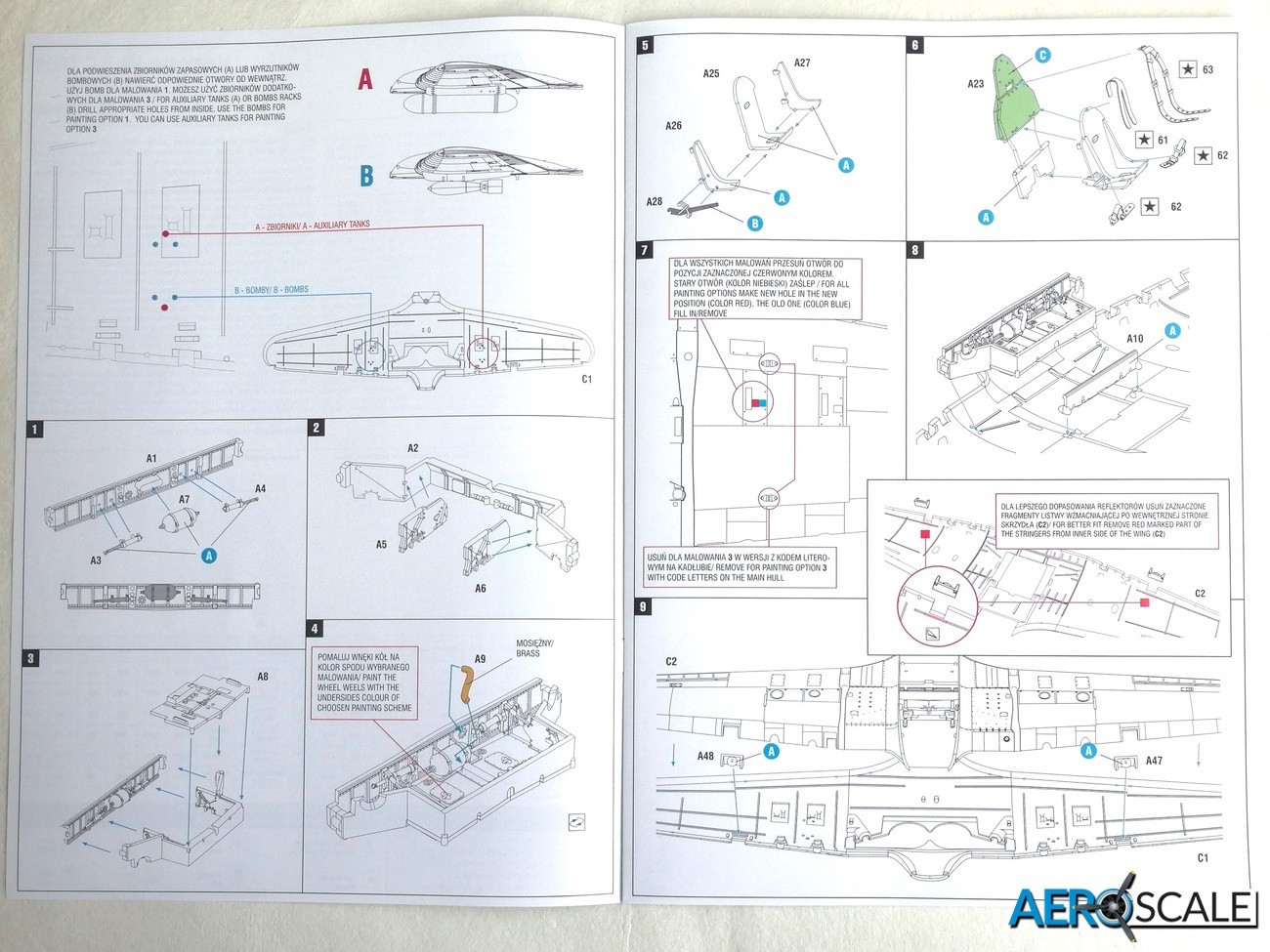
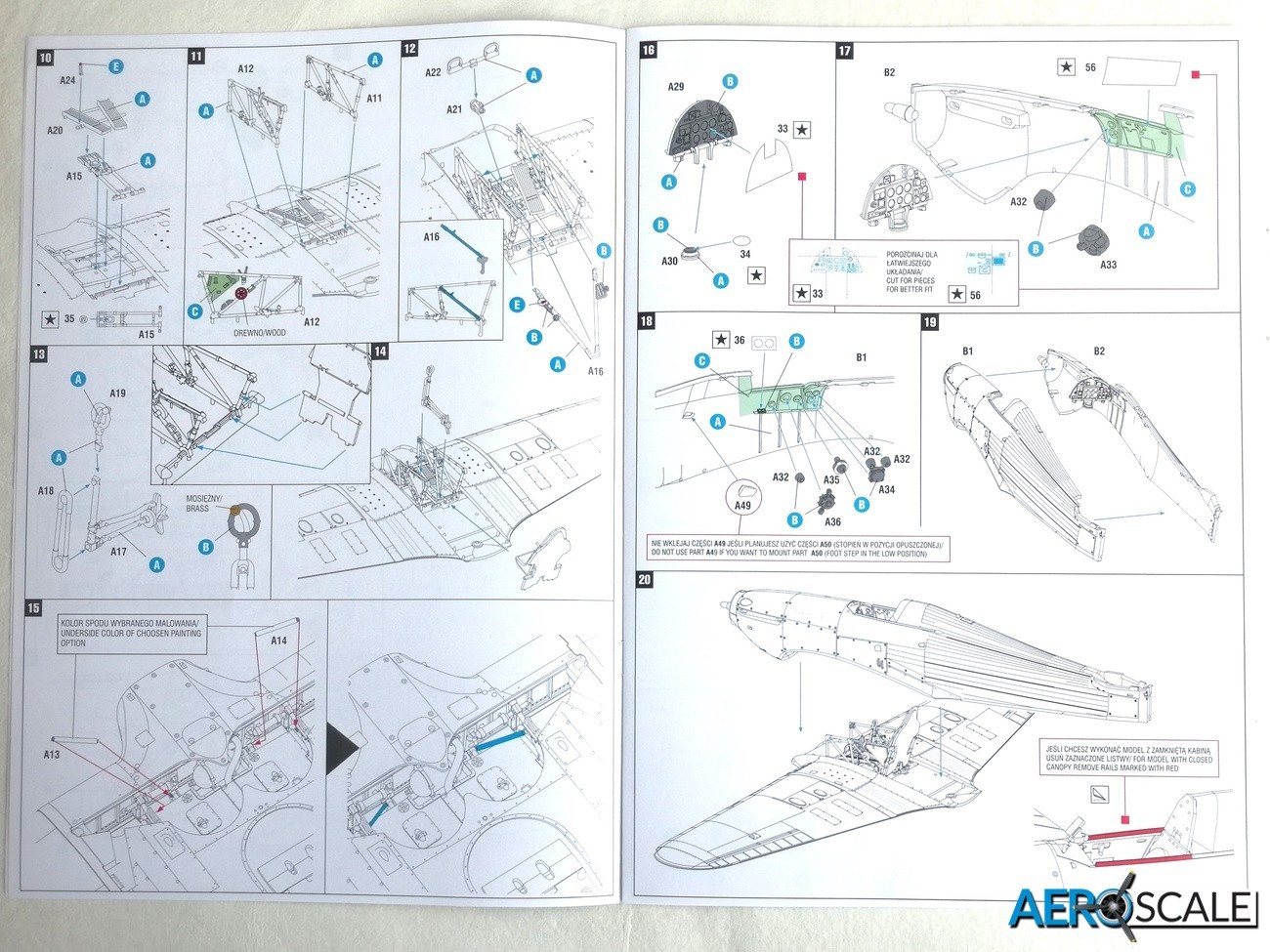
Conclusion
This is another superb quarter scale release from Arma Hobby. The attention to detail and the finesse of the surface detail is quite superb. The quality extends to the decals from Techmod too. There has been good feedback for the build quality of the first release of the Hurricane Mk.II. Very highly recommended
40005 - Hawker Hurricane Mk IIc Trop – 1:48
Please remember, when contacting retailers or manufacturers, to mention that you saw their products highlighted here – on Aeroscale.
